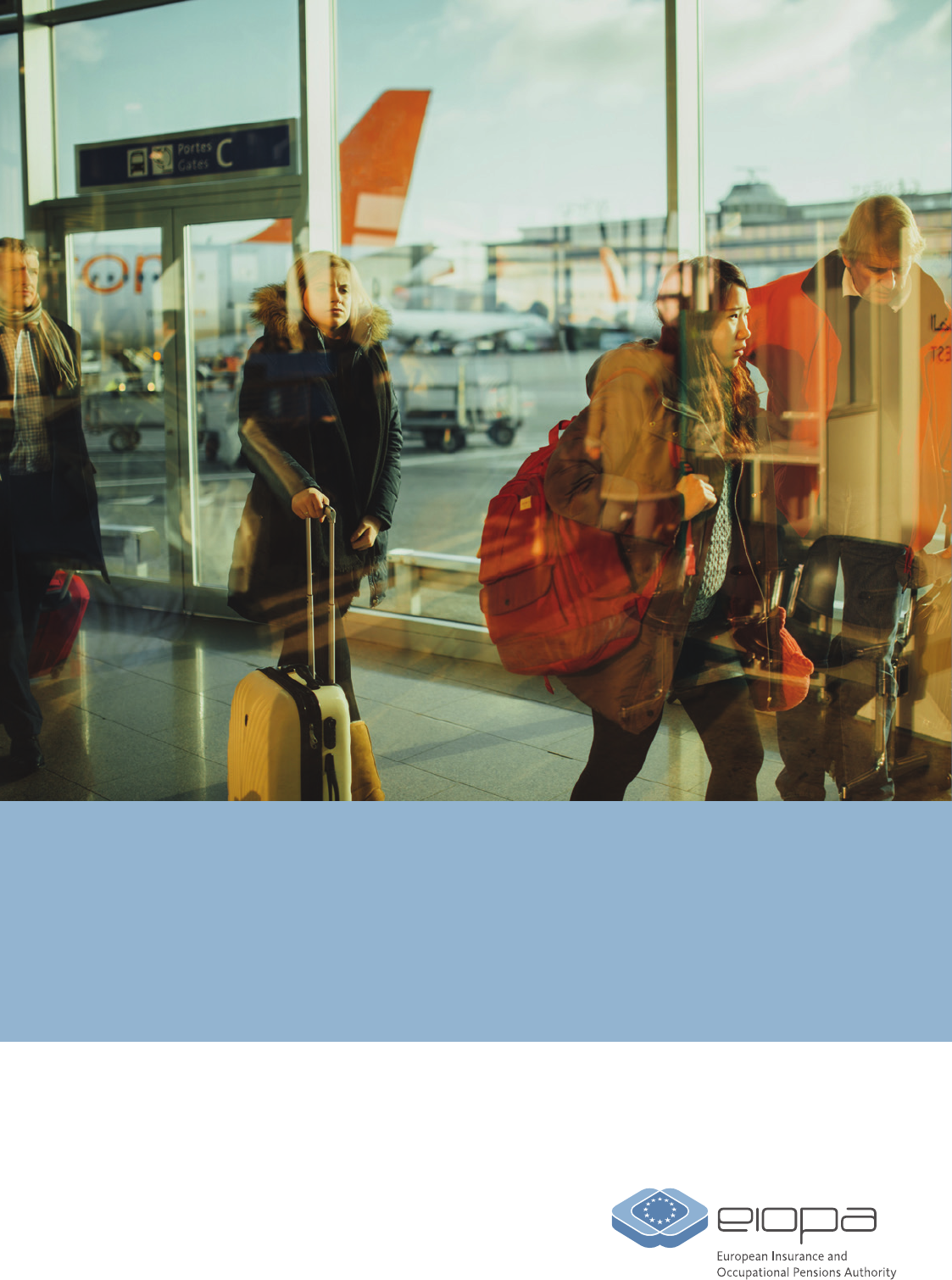
PDF ISBN 978-92-9473-211-8 doi:10.2854/069800 EI-02-19-509-EN-N
Print ISBN 978-92-9473-212-5 doi:10.2854/86236 EI-02-19-509-EN-C
Luxembourg: Publications Oce of the European Union, 2019
© EIOPA, 2019
Reproduction is authorised provided the source is acknowledged.
For any use or reproduction of photos or other material that is not under the EIOPA copyright,
permission must be sought directly from the copyright holders.
CONSUMER PROTECTION
ISSUES IN TRAVEL
INSURANCE:
A THEMATIC REVIEW
CONTENTS
EXECUTIVE SUMMARY
INTRODUCTION
METHODOLOGY
. OVERVIEW OF TRAVEL INSURANCEMARKET
1.1. General overview 13
1.2. Travel insurance products 15
1.3. Financial ratios in travel insurance 16
1.4. Commission levels in travel insurance 18
1.4.1. Bancassurance 18
1.4.2. Insurance agents/brokers 19
1.4.3. Ancillary insurance intermediaries 20
1.4.4. Comparison websites/aggregators 21
1.5. Claims ratio 22
1.6. Denied claims 24
. BUSINESS MODELS
2.1. Changes in the business models 26
2.2. Digitalisation and innovation - the drivers for change 27
2.3. New digital distributors of travel insurance 28
2.4. Emerging business models – Big Tech entering the market 29
2.5. Risks for distributors not integrating new digital models 30
. IDENTIFIED ISSUES IN PRODUCT DESIGN
3.1. Product complexity 31
3.2. Terms and conditions- transparency and disclosure 32
3.3. Product diversity and product standardization 33
3.4. Pre-existing medical conditions 34
3.5. Over-insurance and double insurance 36
3.6. Premium calculation – factors considered 38
EUROPEAN INSURANCE AND OCCUPATIONAL PENSIONS AUTHORITY
2
. DISTRIBUTION AND SALES PROCESSES
4.1. Cross selling and add-ons 40
4.1.1. Consumer behaviour with add-on insurance 42
4.1.2. Online distribution: impact on and risks for consumers 43
4.2. Changing distribution channels 45
4.3. Issues with tenders for online distribution 46
4.4. Sales practices 47
. COMPLAINTS
. CONCLUSIONS AND NEXT STEPS
ANNEX I REGULATORY FRAMEWORK
ANNEX II REPORTED CONSUMER PROTECTION ISSUES
ANNEX III GLOSSARY
ANNEX IV LIST OF ACRONYMS
CONSUMER PROTECTION ISSUES IN TRAVEL INSURANCE: A THEMATIC REVIEW
3
TABLE OF FIGURES
FIGURE GWP GROWTH IN THE EEA FOR VS
FIGURE EEA GWP GROWTH FOR ASSISTANCE VS NONLIFE IN
FIGURE AVERAGE COMMISSIONS IN THE EEA IN
THE NONLIFE INSURANCE
FIGURE COMMISSION LEVELS IN ASSISTANCE VS NONLIFE
FIGURE AVERAGE CLAIMS RATIO IN NONLIFE
INSURANCE IN VS
FIGURE AVERAGE CLAIMS RATIO IN NONLIFE INSURANCE IN
FIGURE NUMBER OF NEW POLICIES
FIGURE TRAVEL INSURANCE CUSTOMERS
FIGURE COLLECTED GWP FOR SINGLETRIP
AND MULTITRIP POLICIES
FIGURE AVERAGE FINANCIAL RATIOS IN TRAVEL
INSURANCE VS NONLIFE INSURANCE AS A WHOLE
FIGURE GWP SPLIT BY DISTRIBUTION CHANNEL
FIGURE AVERAGE COMMISSIONS AND CLAIMS RATIOS
FIGURE MAXIMUM COMMISSION LEVELS AND CLAIMS RATIOS
FIGURE AVERAGE COMMISSIONS IN BANCASSURANCE
FIGURE MAXIMUM COMMISSIONS IN BANCASSURANCE
FIGURE AVERAGE COMMISSIONS TO
INSURANCE AGENTS BROKERS
FIGURE MAXIMUM COMMISSIONS TO
INSURANCE AGENTS BROKERS
FIGURE AVERAGE COMMISSIONS TO ANCILLARY
INSURANCE INTERMEDIARIES
FIGURE MAXIMUM COMMISSIONS TO ANCILLARY
INSURANCE INTERMEDIARIES
EUROPEAN INSURANCE AND OCCUPATIONAL PENSIONS AUTHORITY
4
FIGURE AVERAGE COMMISSIONS TO COMPARISON
WEBSITESAGGREGATORS
FIGURE MAXIMUM COMMISSIONS TO COMPARISON
WEBSITESAGGREGATORS
FIGURE CLAIMS RATIO
FIGURE MEDIAN CLAIMS RATIOS PER DISTRIBUTION CHANNEL
FIGURE CLAIMS RATIOS
FIGURE TOTAL CLAIMS PAID PER COVER
FIGURE PROPORTION OF DENIED CLAIMS
FIGURE PROPORTION OF DENIED CLAIMS PER
DISTRIBUTION CHANNEL
FIGURE PROPORTION OF DENIED CLAIMS OUT
OF TOTAL CLAIMS PER COVER
FIGURE CHANGES IN BUSINESS MODELS
FIGURE APPROACH TO PRODUCT OFFERING
FIGURE PREEXISTING MEDICAL EXCLUSIONS
FIGURE PRODUCTS BUILT ON EHIC
FIGURE SINGLETRIP POLICY
FIGURE MULTITRIP POLICY
FIGURE PREMIUM VARIATION PER DISTRIBUTION CHANNEL
FIGURE PARTICIPATION OF INSURERS IN TENDERS
FIGURE NUMBER OF COMPLAINTS PER REASON
FIGURE MEASURE TAKEN AS A FOLLOWUP TO COMPLAINTS
CONSUMER PROTECTION ISSUES IN TRAVEL INSURANCE: A THEMATIC REVIEW
5
EXECUTIVE SUMMARY
The European Insurance and Occupational Pensions Authority (EIOPA) launched in 2018
a thematic review aimed at better understanding travel insurance products, to identify
potential sources of conduct risk and consumer detriment, so as to take relevant super-
visory actions if needed.
With economic recovery, in the aftermath of the financial crisis, coupled with decreasing
travel costs, travellers’ numbers have been growing each year. This has led to growth in
the travel insurance market.
Travel insurance has however been in the spotlight of supervisors in some European
countries given the specific conduct risks it entails, related to conflicts of interest arising
from mis-aligned incentives in distribution channels, consumer behaviour issues arising
in so-called ‘add-on’ markets, and consequential risks of poor value at the level of the
product oer. Travel insurance is mostly a ‘small-ticket’ business, but it can be critical
for consumers, since the impact of insucient cover or denied claims – in particular
for medical expenses while travelling – can be extensive at the individual level. Issues
around coverage, denied claims, unclear and conflicting terms and conditions have also
been highlighted in EIOPA’s engagement with stakeholders and input gathered in view
of reporting on consumer trends.
Moreover, the travel insurance sector is also facing important changes that may bring
opportunities whilst also heightening existing problems and bringing new risks. Insur-
ance undertakings have been integrating new technologies into their business models
leading to changes across the entire value chain, while new kinds of distributors have
entered the market. Particular concerns arise with regard to rising commissions, the
exploitation of behavioural biases when selling online travel insurance policies, and the
potential erosion of product value and features.
Some of the key findings of the thematic review are:
› The travel insurance market as a whole does not appear to face a general market fail-
ure, and travel insurance products remain valuable for consumers. However some
business models entail heightened conduct risks, including remuneration structures
based on very high commissions. This leads to consumer detriment.
› While the average commissions in travel insurance are around 24% of the gross
written premium (GWP), there are insurers that pay extremely high commissions to
distributors, of significantly more than 50% of the premium. (see Section 1.4)
› The average claims ratio is 40% of the GWP and there is limited dierence in the
average regardless of the distribution channel. However, there are very wide varia-
tions in these ratios; some insurers have claims ratios below 20% of the GWP. These
are a strong indicator of potential low value for consumers. (see section 1.5)
› New market players are entering the market, typically selling travel insurance prod-
ucts online as an ancillary activity (airline and ferry companies, price comparison
websites, aggregators, banks and supermarkets);
EUROPEAN INSURANCE AND OCCUPATIONAL PENSIONS AUTHORITY
6
› Partnerships with new distributors are established via international tenders, which
in some cases are solely based on commissions to be paid to distributors rather than
on the quality of the products to be distributed. As highlighted by 19 insurers, this
can result in very high commission rates reaching in some cases well above 50%
of the premium, yet these higher commissions are not correlating with improved
services for the customer from the distributor;
› Around 70% of insurers exclude pre-existing medical conditions from the coverage
of travel insurance products and most of these insurers do not use pre-contractual
medical screening. Such screening is more common at the claim stage in order to
identify if the incident is caused by a pre-existing medical condition, as a basis for
dismissing the claim;
› Overlaps in cover are not assessed in the sale process in most cases. The assess-
ment is done at the claim stage in order to identify which policy will cover the inci-
dent and the expenses will be split between insurers. This can be anticipated to
increase costs for consumers.
Given these findings, EIOPA will now work on a number of measures to improve the
quality of outcomes for consumers in this market. EIOPA considers that improvements
are necessary, and will examine all the tools available for driving these improvements.
Tools available include:
› a warning to the industry on high commissions and business models that rely on
such remuneration structures. Such practices are not acceptable and the conduct
risks are dicult to justify;
› a dialogue with the industry including new market players (e.g. involved in distribu-
tion), NCAs and consumer representatives on how to best tackle consumer behav-
iour in the context of such markets from a practical standpoint, including the setting
out of expectations on how to achieve value for customers buying through ancillary
distributors and in the context of ‘add-ons’;
› a setting out of expectations on the practical implementation of IDD - as a rein-
forcement of the importance of rules on acting in the best interests of the customer,
on conflicts of interest and on product oversight and governance;
› working with national supervisors to identify priority parts of the business where
enhanced supervisory attention would be justified; and
› a dialogue on the use of commission caps as a stronger intervention as necessary.
CONSUMER PROTECTION ISSUES IN TRAVEL INSURANCE: A THEMATIC REVIEW
7

INTRODUCTION
Alongside other add-on and ancillary insurance products,
travel insurance has been under the spotlight for a num-
ber of years. In 2017, 11 National Competent Authorities
(NCAs) reported an increase in cross-selling of ancillary
insurance products in general, and specific issues in rela-
tion to travel insurance have been reported for several
years via EIOPA’s Consumer Trends work.
For example, although the total number of travel insur-
ance related complaints are a small part of all complaints,
the Consumer Trends work showed that in 2017, travel
insurance related complaints increased 85% (from 23.499
to 43.363 complaints), having increased in 14 of the 20
Member States which reported information on travel
insurance (in 3 Member States more than 120%).
In light of these concerns and the potential for consumer
detriment NCAs have increased their focus on add-on/
ancillary insurance in general and on travel insurance in
particular.(
1
) Amongst the 64 thematic activities reported
by NCAs to EIOPA in 2017, 11 looked at travel insurance
amongst other issues and in 2018, out of the 63 activities,
12covered travel insurance.
(
1
) For example, the Financial Conduct Authority (FCA) recently pub-
lished a report on a thematic review on ‘General Insurance’ that included
travel insurance. The Australian Securities and Investment Commission
(ASIC) has focused on ‘add-on insurance through car dealers’. The Isti-
tuto per la Vigilanza Sulle Assicurazioni (IVASS) conduct several thematic
reviews covering add-on and ancillary insurance.
Turning to Solvency II data, this is only available by line of
business, preventing clear conclusions on conduct risks
in the travel insurance market being drawn. While travel
insurance data mainly falls under the Assistance line
of business it can also be reported under other lines of
business (e.g., Medical Expense, Miscellaneous Financial
Loss); in addition, these lines of business also cover other
products (e.g., road-assistance). Moreover, conduct rele-
vant data, in particular qualitative data, is limited.
Despite this, an analysis of certain retail risk indicators
based on available Solvency II data can show where
potential issues and causes for consumer detriment might
arise in relation to travel insurance.
By looking at the assistance line of business, it can be
noticed that the 1% - average GWP growth in 2017 for the
assistance line of business in the EEA(
2
) has been in line
with the non-life insurance as a whole. (Figure 1)
(
2
) Data available for 28 EEA countries out of 31
Source: EIOPA Solvency II Database
Figure 1 - GWP growth in the EEA for 2017 vs 2016
1%
1%
5%
-3%
1%
-1%
-2%
1%
3%
10%
1%
Assistance Medical
Expense
Income
protection
insurance
Workers'
compensation
insurance
Motor vehicle
liability
insurance
Other
motor
insurance
Fire and other
damage to
property
insurance
General
liability
insurance
Legal
expenses
insurance
Miscellaneous
financial loss
Total
EUROPEAN INSURANCE AND OCCUPATIONAL PENSIONS AUTHORITY
8

The EEA(
3
) average commissions in the assistance busi-
ness line in 2017 were 19% compared to 14% for non-life
insurance as a whole.
(
3
) Data available for 28 countries of the EEA out of 31.
However, in 16 countries of the European Economic Area
(EEA), the average GWP growth has been higher in the
assistance business line than for non-life insurance as a
whole. Moreover, in 19 countries, the GWP growth rate
has been higher than the average EEA GWP growth rate
of 1%. In 7 EEA countries, the GWP experienced a signifi-
cant growth of more than 20%.
Source: EIOPA Solvency II Database
Figure 2 - EEA GWP growth for assistance vs non-life in 2017
–40.0%
–20.0%
0.0%
20.0%
40.0%
60.0%
80.0%
Assistance Total NL
Source: EIOPA Solvency II Database
Figure 3 - Average commissions in the EEA in the non-life insurance
19%
16%
20%
18%
17%
17%
18%
6%
29%
12%
14%
18%
16%
19%
18%
18%
18%
20%
6%
29%
12%
14%
Assistance
Medical
Expense
Income
protection
insurance
Workers'
compensation
insurance
Motor
vehicle
liability
insurance
Other motor
insurance
Fire and
other
damage to
property
insurance
General
liability
insurance
Legal
expenses
insurance
Miscellaneous
financial loss
Total
2017 2016
CONSUMER PROTECTION ISSUES IN TRAVEL INSURANCE: A THEMATIC REVIEW
9
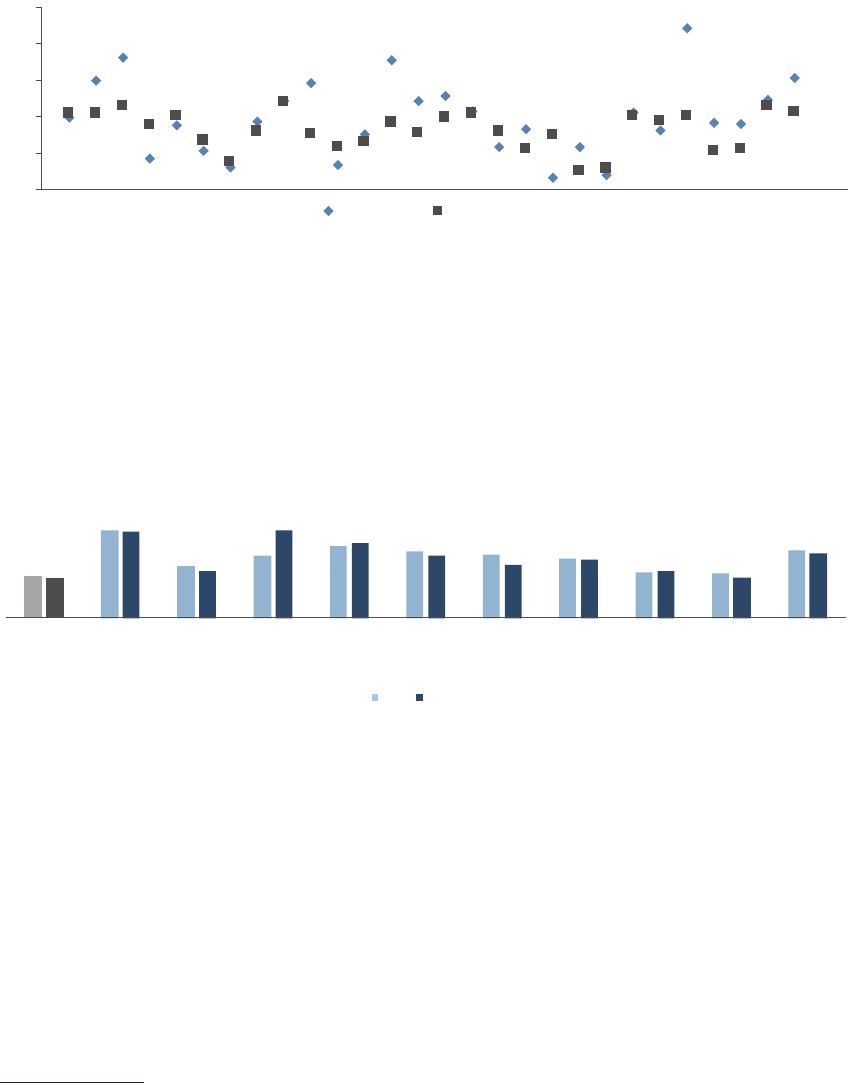
The average claims ratio for assistance in 2017 in the
EEA (
4
) countries has been 40%, compared to 63% for
the non-life insurance as a whole, being the lowest claims
ratio amongst non-life insurance lines of business.
(
4
) Data available for 28 EEA countries out of 31.
Source: EIOPA Solvency II Database
Figure 4 - Commission levels in assistance vs non-life
0%
10%
20%
30%
40%
50%
Assistance Total Non Life
At the Member State level, it can be noticed that in 26
countries, the average claims ratio in 2017 for assistance
was lower than for non-life insurance as a whole. Further-
more, in 17 countries, the claims ratio for the assistance
line of business was lower than the EEA average and in 8
countries the claims ratio was lower than 30%.
Source: EIOPA Solvency II data
Figure 5 - Average claims ratio in non-life insurance in 2017 vs 2016
40%
85%
50%
60%
69% 64%
61%
57%
44%
43%
65%
39%
84%
45%
85%
73%
60%
51%
56%
46%
39%
63%
Assistance Medical
Expense
Income
protection
insurance
Workers'
compensation
insurance
Motor vehicle
liability
insurance
Other
motor
insurance
Fire and other
damage to
property
insurance
General
liability
insurance
Legal
expenses
insurance
Miscellaneous
financial loss
Total
2017 2016
In 16 countries, the average commission rates in the assis-
tance business line were higher than the average commis-
sions in non-life insurance as a whole (Figure 4).
EUROPEAN INSURANCE AND OCCUPATIONAL PENSIONS AUTHORITY
10

Source: Solvency II data
Figure 6 - Average claims ratio in non-life insurance in 2017
0%
20%
40%
60%
80%
100%
EEA Assistance average EEA Total NLaverage Assistance Total Non Life
Considering the reported potential for consumer detri-
ment as well as the emergence of a trend, in 2018 EIOPA
launched a thematic review on travel insurance, with the
aim of better understanding possible drivers and their
materiality for consumer detriment.
CONSUMER PROTECTION ISSUES IN TRAVEL INSURANCE: A THEMATIC REVIEW
11

METHODOLOGY
As explained in the published industry questionnaire, for
the purpose of this thematic review EIOPA followed an
agreed upon methodology. EIOPA gathered information
from insurance undertakings and a selection of stake-
holders:
1. Insurance undertakings: Evidence from insurance
undertakings was collected via an Industry Ques-
tionnaire (IQ) sent to a sample of 201 insurance
undertakings operating in 29 Member States. (
5
) The
questionnaire has been distributed by the NCAs to the
selected insurance undertakings only – no information
has been collected directly from intermediaries.
The decision on the sample composition has been
taken by each NCA considering local market specifi-
cities, to ensure market representativeness. In select-
ing which insurance undertakings to include in the
sample, NCAs considered the following principles:
¡ Include insurance undertakings of dierent
sizes;
¡ Include 7 of the largest 10 insurance
undertakings;
¡ Represent 60% of gross written premiums.
(
5
) EEA Member States excluding CY and LI.
The questionnaire covered quantitative (
6
) and quali-
tative information on:
¡ The main characteristics of travel insurance
products;
¡ Sales practices and consumer behaviour, and
¡ Emergence of new distributional channels and
new business models.
The collected information from participating insur-
ance undertakings provided a market-oriented and
practical perspective on the degree and extent to
which new innovative distribution channels and busi-
ness models are aecting, or are expected to aect
the travel insurance market.
2. Stakeholders: Evidence from stakeholders mainly
included discussions with the industry and consum-
ers’ associations as well as EIOPA’s Insurance and
Reinsurance Stakeholders’ Group (IRSG). Informa-
tion requested from stakeholders mainly concerned
emerging distribution channels and business models
and how these can aect consumers.
(
6
) The reference reporting date was 31.12.2017
EUROPEAN INSURANCE AND OCCUPATIONAL PENSIONS AUTHORITY
12

1. OVERVIEW OF TRAVEL
INSURANCEMARKET
1.1. GENERAL OVERVIEW
According to the United Nations World Tourism Organ-
isation (UNWTO), international tourism has been expe-
riencing accelerating growth (
7
) since 2010. In 2017 in
Europe, international arrivals grew 8.4% against a global
average of 7%. (
8
) European travel demand increased and
Europeans have retained the status of the most travelled
nations in the world, accounting for 48% of the outbound
tourism in 2017. According to Eurostat, in 2017 the EU resi-
dents made around 1.3 billion trips. Moreover, around 62%
of EU residents made at least one personal trip in 2017. (
9
)
In this regard and considering that very often travel insur-
ance is bought jointly with trips, from a consumer’s per-
spective, the cost of travel insurance represents only a
fraction of the total cost of the primary travel product. (
10
)
Despite this apparent reduced relevance for industry and
consumers, from a forward-looking consumer protec-
tion perspective, travel insurance is expected to grow
in importance, and the aggregate impact of poor value
for money can be notable. In addition, from an individual
perspective, detriment could be significant e.g. where the
financial impact of medical expenses while traveling can
be large (see Section 3.4).
The demand for travel insurance is expected to follow
the growth in the tourism industry fuelled by a recover-
ing economy and higher demand from a growing number
of wealthier senior citizens and to benefit from greater
awareness of this type of product by consumers. (
11
)
(
7
) This is calculated based on arrivals.
(
8
) UNWTO Tourism Highlights: 2018 Edition https://www.e-unwto.
org/doi/book/10.18111/9789284419876
(
9
) Tourism statistics for 2017, Eurostat https://ec.europa.eu/eurostat/
statistics-explained/Tourism_statistics
(
10
) A general rule of thumb is that a package plan will cost between 5%
and 7% of the total trip cost depending on the plan.
(
11
) Global travel insurance market – Allied Market Research; available
at: https://www.alliedmarketresearch.com/travel-insurance-market.
Furthermore, the competitive and distribution dynamics
of the market are expected to continue to evolve. The
shift in the market from being primarily local and in-
person to global and remote (i.e., online access) is leading
to the emergence and consolidation of new distribution
channels, new ways of engaging with customers, and a
new breed of competitors and disruptors of the tradi-
tional business models (see Section 2.3). These changes
are relevant for consumers and the insurance industry as
a whole given that these changes may well find parallels
in other insurance products.
From an industry perspective, travel insurance is one
of the smallest non-life lines of business. Based on the
data reported by the insurance undertakings in the IQ on
GWP, travel insurance accounts for 4% of the total non-
life insurance business. The year-on-year growth in travel
insurance was around 3% in 2016 compared to 2015. In
2017, travel insurance experienced a significant growth
of 9%, while non-life insurance in general experienced a
growth of 5% both in 2016 and in 2017.
Alongside growth in travel, travel insurance has also
increased; in fact, as shown in Figure 7 the travel insur-
ance market experienced a significant growth in terms of
number of policies. In 2016 the number of new policies
underwritten by the participants in the questionnaire was
73 million (+3.7% compared to 2015) and 2017 it reached
83 million (+13.2% compared to 2016).
Figure 7 - Number of new policies
70
73
83
3.7%
13.3%
–10%
–5%
0%
5%
10%
15%
64
66
68
70
72
74
76
78
80
82
84
2015 2016 2017
Millions
Number of Policies YoY Growh
Source: EIOPA Travel Insurance thematic review
CONSUMER PROTECTION ISSUES IN TRAVEL INSURANCE: A THEMATIC REVIEW
13
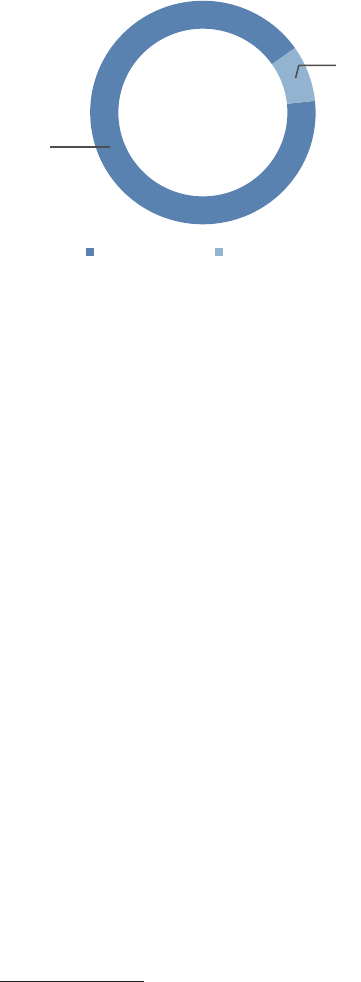
In fact, while often being low cost products, (
12
) travel
insurance coverage can bring significant benefits to con-
sumers; indeed this is a fundamentally retail business -
the vast majority of customers are retail (92% of the total
travel insurance GWP concerns policies sold to retail cus-
tomers, while corporate customers account only for 8%).
(
12
) This can be seen from a comparison of GWP with numbers of poli-
cies reported for 2017 – leading to an average policy of around 30 EUR.
Figure 8 - Travel insurance customers
92%
8%
Retail customers Corporate customers
Source: EIOPA Travel Insurance thematic review
EUROPEAN INSURANCE AND OCCUPATIONAL PENSIONS AUTHORITY
14
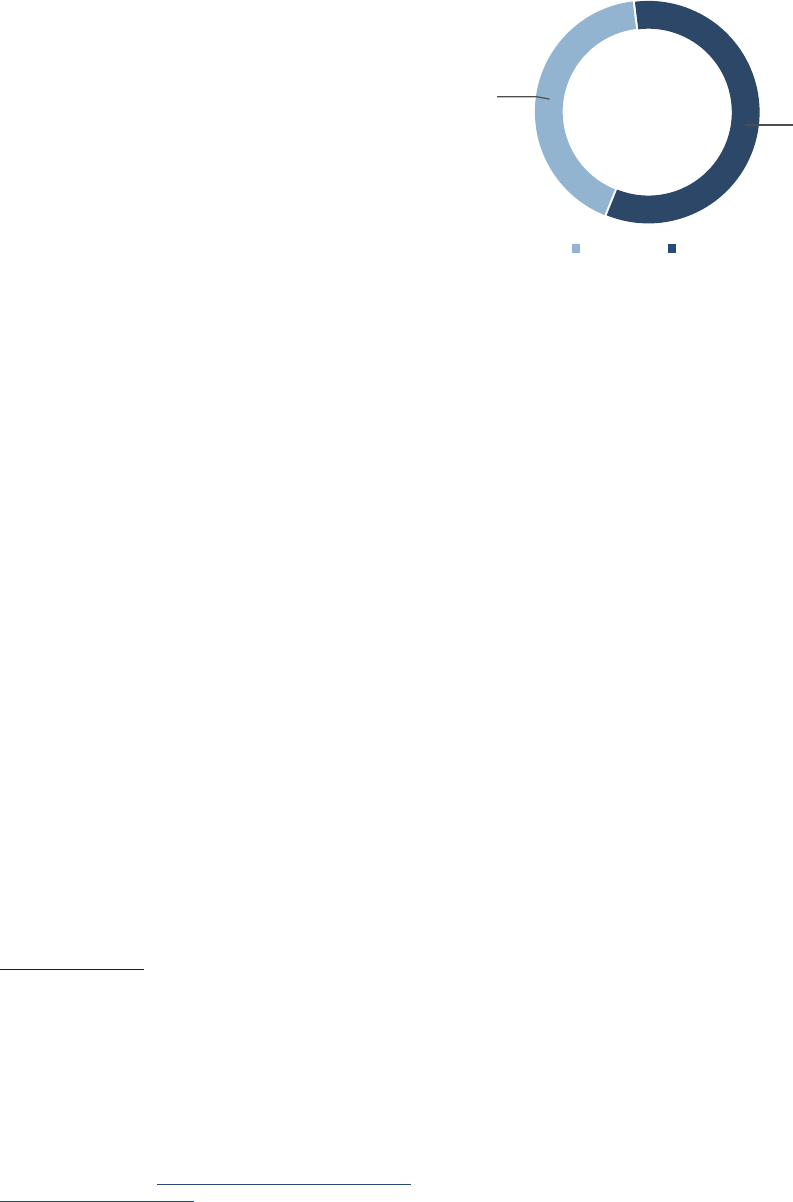
1.2. TRAVEL INSURANCE
PRODUCTS (
13
)
As mentioned, travel insurance products are generally low
cost products covering a wide variety of risks. One of the
key characteristics is that travel insurance is often sold as
ancillary to other products and/or it is often included in
a package, leading to important behavioural biases in the
sale process. (
14
) (see Section 4.1.1)
This also implies that, while for other types of insurance
products specific distribution channels are prevalent (e.g.,
in many markets agents and comparison websites are
the most common distribution channels for Motor Third
Party Liability – MTLP – policies (
15
)) travel insurance is
placed on the market via a wide variety of distribution
channels. These include direct writers, insurance brokers
and agents, mainstream travel agents, tour operators,
airlines, ferries/railway operators, banks, credit card pro-
viders, online travel specialists and comparison websites/
aggregators.
Travel insurance is generally available in two forms: (i) as
a single-trip insurance policy, which provides cover for a
specific trip and is matched to the exact characteristic of
the trip (e.g. number of travelling days and destination)
and (ii) as an annual insurance policy, which covers mul-
tiple trips in a year.
The split appears to be equal; in fact, in 2017 travel
insurance GWP collected by the participants in the IQ
accounted for 2.9 billion euros split as follows (Figure 9):
58% of the GWP have been collected through Multi-trip
policies and 42% through Single-trip policies.
Single-trip policies are mainly sold via ancillary insurance
intermediaries (52% of total single trip GWP) and by
insurance agents/ brokers (24% of total single-trip GWP),
followed by direct sales (17%). Single-trip policies sold via
bancassurance represented only 2% and comparison web-
sites/ aggregators only 3%.
(
13
) All types of travel insurance were within the scope of the thematic
review with the exception of products covering long uninterrupted stays
abroad, given their unique purpose and characteristics, in particular in
which concerns the specific cover they oer (in most cases limited to
explicit medical costs).
(
14
) A general rule of thumb is that a package plan will cost between 5%
and 7% of the total trip cost depending on the plan so consumers do not
pay much attention to the travel insurance product.
(
15
) Evaluation of the Structure of Insurance Intermediaries Markets in
Europe in accordance with Article 41(5) of the Insurance Distribution
Directive (IDD), EIOPA https://eiopa.europa.eu/the-European-Insur-
ance-Intermediaries-Markets.aspx
With regard to Multi-trip policies the situation is reversed.
Multi-trip policies are mainly sold via bancassurance (46%
of the multi trip GWP) followed by insurance agents/ bro-
kers (22%) and direct sales (20%). In this case, ancillary
insurance intermediaries collected only 9% of the total
GWP for multi-trip policies.
Within these two broad groups, several types of cover
are available to consumers, e.g. trip cancelation & inter-
ruption, emergency medical costs, rental car insurance
excesses, etc. Travel insurance may also be available as
individual policies or group policies intended to cover
multiple individuals (e.g. families, groups or employees of
the same entity). In addition to single-trip or annual travel
insurance, some products sold under the label of travel
insurance are designed to provide cover for long uninter-
rupted stays abroad, for instance for students studying
abroad. These tend to cover medical costs only.
Figure 9 - Collected GWP for Single-trip and Multi-trip
policies
42%
58%
Single-trip Multi-trip
Source: EIOPA Travel Insurance thematic review
CONSUMER PROTECTION ISSUES IN TRAVEL INSURANCE: A THEMATIC REVIEW
15
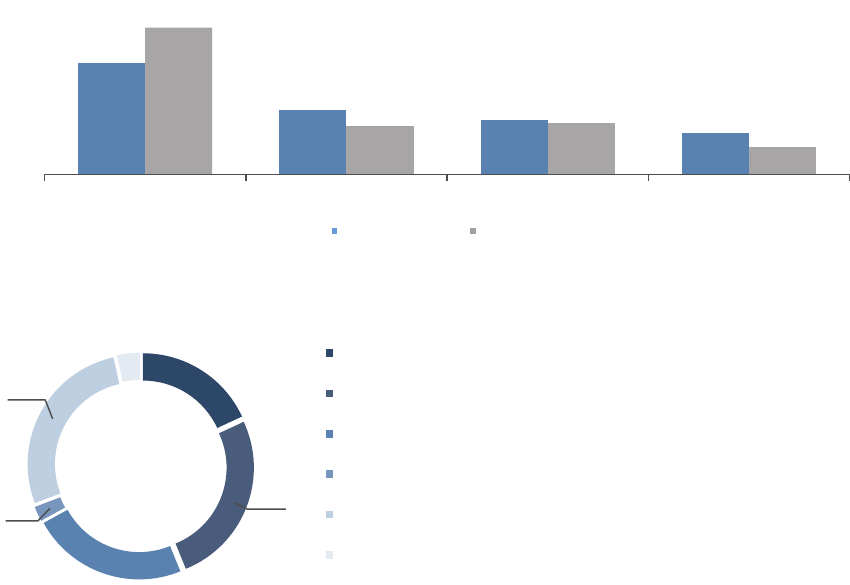
1.3. FINANCIAL RATIOS IN
TRAVEL INSURANCE
From an analysis of selected financial ratios, travel insur-
ance seems to be a more profitable business for insurers
compared to non-life insurance business as a whole.
¡ Insurers make more profit by underwriting
travel insurance: the net underwriting result in
travel insurance (15%) is higher than for non-life
insurance business as a whole (10%).
¡ The average claims ratio, as reported by the
insurance undertakings is lower in travel insur-
ance (40%) compared to the non-life insurance
as a whole (53%).
¡ Moreover, average commission levels in travel
insurance are higher (24%) compared to the
entire non-life insurance business (18%). These
averages mask significant divergences however:
extreme commissions are highly concerning
from a supervisory standpoint. (see Section 1.4)
¡ Average levels of expenses, as reported by the
insurers are in line with non-life business as a
whole, around 19%.
Insurers reported a trend of growing collected premiums
over the last three years preceding 2017. Indeed, based
on the data reported by the insurance undertakings in
the IQ, the total collected GWP experienced a growth of
3% in 2016 compared to 2015 and a growth of 7% in 2017
compared to 2016.
Figure 11 presents the GWP split per distribution channel.
Ancillary insurance intermediaries collected 27% of the
total GWP, bancassurance 26% and insurance agents/
brokers collected 23%. Insurers collected 18% of the total
GWP through direct sales. Price comparison websites and
aggregators are still at an emergent stage and the total
collected GWP accounts only for 2%. However, in the
case of those insurers that use price comparison websites
and aggregators, collected premiums via this channel go
up to 15%-25% of the total collected GWP.
The above average claims ratio and average commission
levels in travel insurance are not representative for the
whole sample of participants in the IQ. There are cases
where the two indicators for some insurance undertak-
ings are extremely divergent from the average.
A more detailed analysis on commission levels and claims
ratios is presented in the next Sections 1.4 and 1.5.
Source: EIOPA Travel Insurance thematic review
Figure 10 –Average financial ratios in travel insurance vs non-life insurance as a whole
40%
24%
20%
15%
53%
17%
19%
10%
0%
10%
2
0%
30%
4
0%
50%
60%
Claims ratio Commission rates Expenses Net underwritting result
Travel Insurance Non-Life
Source: EIOPA Travel Insurance thematic review
Figure 11 - GWP split by distribution channel
18%
26%
23%
2%
27%
3%
Direct sales
Bancassurance
Insurance agent / broker
Comparison website / aggregator
Ancillary insurance intermediary (total)
Other distribution channel
EUROPEAN INSURANCE AND OCCUPATIONAL PENSIONS AUTHORITY
16
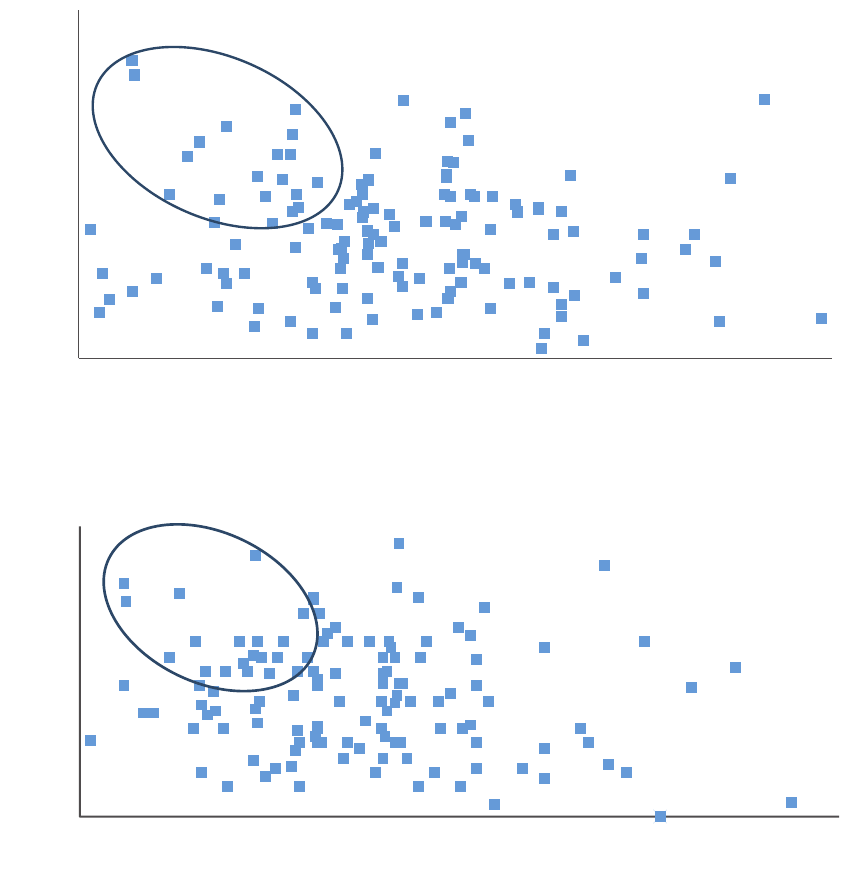
The Figure 12 presents the average commission levels and
claims ratios for each insurance undertaking. It is notice-
able that 38 insurance undertakings paying commissions
above the average of 24% of the GWP have claims ratios
below the average of 40% of the GWP. As shown in the
bubble in Figure 12, 18 insurance undertakings have aver-
age commission levels above 30% of the GWP and claims
ratios inferior to 30% of the GWP.
Additionally, when analysing the maximum commissions
paid to distributors together with the claims ratios for each
insurance undertaking, the connection between high com-
missions and low claims ratios is accentuated. (Figure 13)
24 insurance undertakings pay commissions above 50%
of the GWP and have claims ratios below 35% of the GWP.
The number increases if the threshold for the claims ratio
is increased to 50% of the GWP. (Figure 13)
Out of the 24 insurance undertakings, 14 sell mainly sin-
gle-trip policies (more than 50% of the total collected
GWP) and 4 sell mainly multi-trip insurance policies. 6
out of 14 insurance undertakings use ancillary insurance
intermediaries as the main distribution channel to sell
their single-trip policies.
Source: EIOPA Travel Insurance thematic review
Figure 12 - Average commissions and claims ratios
0%
10%
20%
30%
40%
50%
60%
70%
0% 10% 20% 30% 40% 50% 60% 70% 80% 90%
Commission Rates
Claims Ratios
Source: EIOPA Travel Insurance thematic review
Figure 13 - Maximum commission levels and claims ratios
0%
20%
40%
60%
80%
100%
0% 20% 40% 60% 80% 100%
Maximum commissions
Claims ratios
CONSUMER PROTECTION ISSUES IN TRAVEL INSURANCE: A THEMATIC REVIEW
17

1.4. COMMISSION LEVELS IN
TRAVEL INSURANCE
Although the premiums for travel insurance products are
relatively small compared to other insurance products,
high commissions paid by insurers to distributors may
lead to increased prices for consumers. High levels of
remuneration of firms that incur little costs and do not
deliver services corresponding to the received commis-
sions might raise significant potential for harm and poor
outcomes for consumers. High commissions paid to dis-
tributors can indicate excessive pricing for products of
which the costs are very low.
As reported by insurers in the IQ, commission levels vary
by type of distribution channels and the main determi-
nants of the commission levels paid to distributors are:
¡ Volume of policies sold;
¡ Profitability and performance of the distribution
channel;
¡ Claims ratio;
¡ Market power and size of the customer base;
¡ Exclusivity clauses;
¡ Activities performed (i.e. marketing);
Around 80% of insurance undertakings said they consid-
ered that the actual commission levels paid to distribu-
tors are justified based on the activities performed by the
distributors (i.e., marketing, on-boarding of customers,
claims management, etc.). However, this is not the case
for all distribution channels, and it is not clear that this
conclusion would apply also to higher than average com-
missions. Some respondents consider that in the case of
online insurance aggregators, travel agencies and tour
operators, the commission levels are very high and not
justified, as the eorts made to sell the policies are low in
comparison with other distributors.
It can be argued that commissions charged by these dis-
tributors may relate more to their market power than to
the actual customer acquisition and policy-servicing work
they perform. According to some insurers, commission
levels above 30%-40% of the premium are not justified.
Although the average commission levels reported in the
question on financial ratios in the IQ (Figure 10) indicate
that on average insurers pay 24% of GWP in commissions
to distributors, a more in-depth data analysis paints a
dierent picture. There is significant dispersal in commis-
sion levels, which raises significant consumer protection
concerns.
... BANCASSURANCE
The average commission paid by insurers to banks is
around 26% of the GWP. However, half of the respond-
ents pay commissions higher than the average, going up
to 40% of the GWP. (Figure 14)
Out of those respondents that use bancassurance as
a distribution channel, 47% reported paying maximum
commission levels of 40% of GWP and more. (Figure 15)
In some cases, the commissions paid to banks are high,
reaching 56% of the GWP.
Source: EIOPA Travel Insurance thematic review
Figure 14 - Average commissions in Bancassurance
0%
10%
20%
30%
40%
50%
General average Average commissions
EUROPEAN INSURANCE AND OCCUPATIONAL PENSIONS AUTHORITY
18

... INSURANCE AGENTSBROKERS
Based on the data reported by the respondents, the
average commission levels paid by insurers to insurance
agents/brokers is around 27% of the GWP. However, 40%
of insurers pay commissions higher than the average,
going up to 50% of the GWP in some cases.
Although insurance agents/brokers execute the main func-
tions for concluding a contract with consumers, such higher
levels of commission may not be considered appropriate.
Around 23% of respondents reported maximum commis-
sions over 50% of the GWP and 4% reported commissions
above 78% of the GWP, which is extremely high. (Figure 17)
Source: EIOPA Travel Insurance thematic review
Figure 15 - Maximum commissions in Bancassurance
0%
10%
2
0%
30%
4
0%
50%
60%
Max commission levels
Source: EIOPA Travel Insurance thematic review
Figure 16 - Average commissions to Insurance agents/ brokers
0%
10%
2
0%
30%
4
0%
50%
60%
General average Average commissions
Source: EIOPA Travel Insurance thematic review
Figure 17 - Maximum commissions to insurance agents/ brokers
0%
20%
40%
60%
80%
100%
Maximum commissions
CONSUMER PROTECTION ISSUES IN TRAVEL INSURANCE: A THEMATIC REVIEW
19
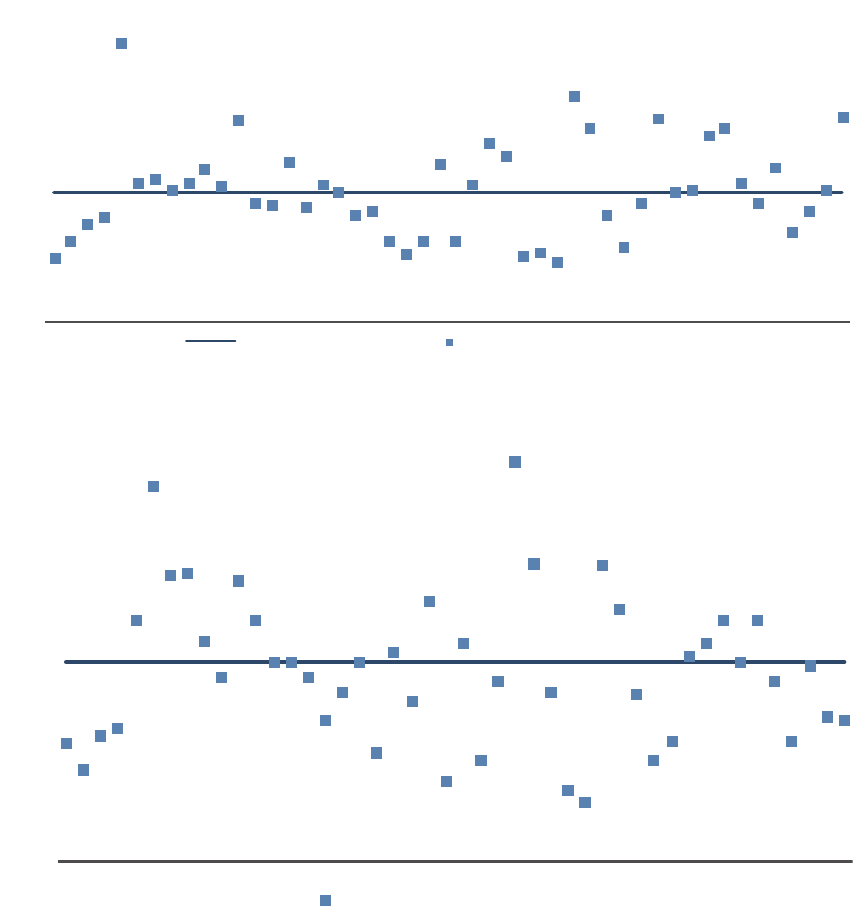
... ANCILLARY INSURANCE
INTERMEDIARIES
The average commissions paid to ancillary insurance
intermediaries by the insurance undertakings are around
33% of the GWP. (Figure 18)
Over 40% of respondents reported maximum commis-
sions of more than 50% of the GWP, and 14% reported
paying maximum commissions of more than 70% of the
GWP. (Figure 19) In one case, the insurer reported paying
maximum commissions of 94% of the GWP.
An analysis of the data on maximum commissions and
proportion of denied claims in total claims showed that 16
insurance undertakings that pay maximum commissions
of more than 30% of the GWP have proportions of denied
claims above the average of 17% of total number of claims.
Out of the 16 insurance undertakings, 9 pay maximum
commissions of more than 50% of the GWP and have pro-
portions of denied claims going from 20% to 69% of the
total claims. (see more in Section 1.5 on denied claims)
Source: EIOPA Travel Insurance thematic review
Figure 18 - Average commissions to ancillary insurance intermediaries
0%
10%
20%
30%
40%
50%
60%
70%
80%
General Average
Average commissions
Source: EIOPA Travel Insurance thematic review
Figure 19 - Maximum commissions to ancillary insurance intermediaries
0%
10%
20%
30%
40%
50%
60%
70%
80%
90%
100%
Maximum commission
EUROPEAN INSURANCE AND OCCUPATIONAL PENSIONS AUTHORITY
20
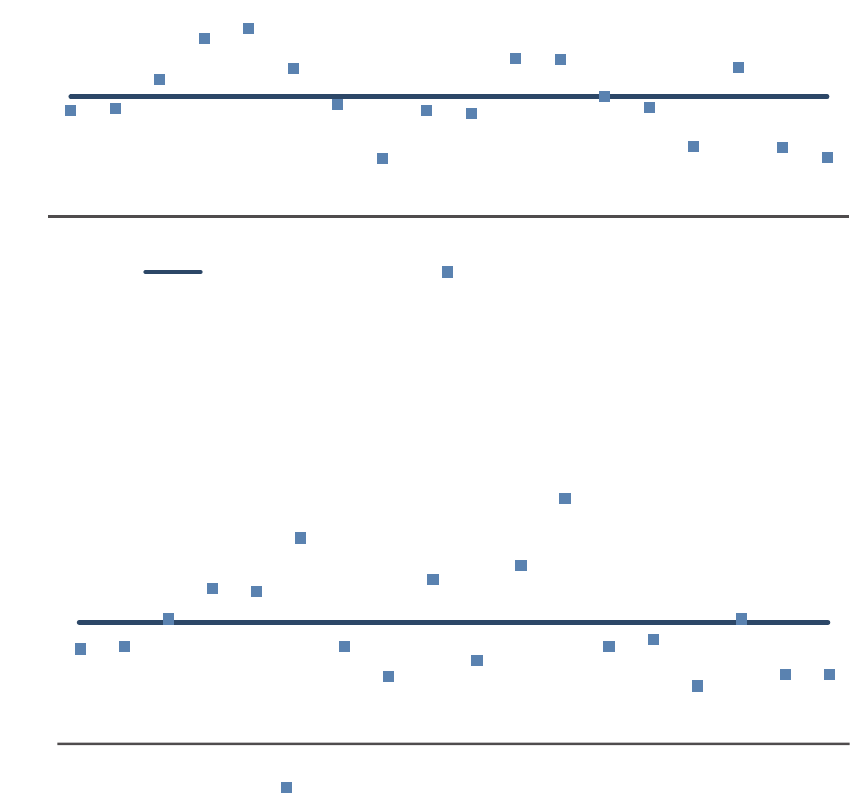
Source: EIOPA Travel Insurance thematic review
Figure 20 - Average commissions to comparison websites/aggregators
0%
20%
40%
60%
General average
Average commissions
Source: EIOPA Travel Insurance thematic review
Figure 21 - Maximum commissions to comparison websites/aggregators
0%
20%
40%
60%
80%
100%
Maximum commissions
... COMPARISON WEBSITES
AGGREGATORS
As shown earlier in Figure 11, comparison website/aggre-
gators are accounting for only 2% of the total collected
GWP by the participants in the Industry Questionnaire.
This distribution channel is still at an incumbent stage in
many of the EU Member States.
This type of distribution channel is in theory a very useful
tool for consumers that are looking to compare dierent
travel insurance products. Providing products from dif-
ferent insurance undertakings with varying prices allows
consumers to compare and choose among a variety of
travel insurance policies.
The respondents that use comparison websites/aggrega-
tors as a distribution channel reported paying on average
35% of the GWP in commissions. (Figure 20)
A third of respondents reported maximum commissions
of more than 55%, going up to 89% of the GWP. (Figure 21)
CONSUMER PROTECTION ISSUES IN TRAVEL INSURANCE: A THEMATIC REVIEW
21
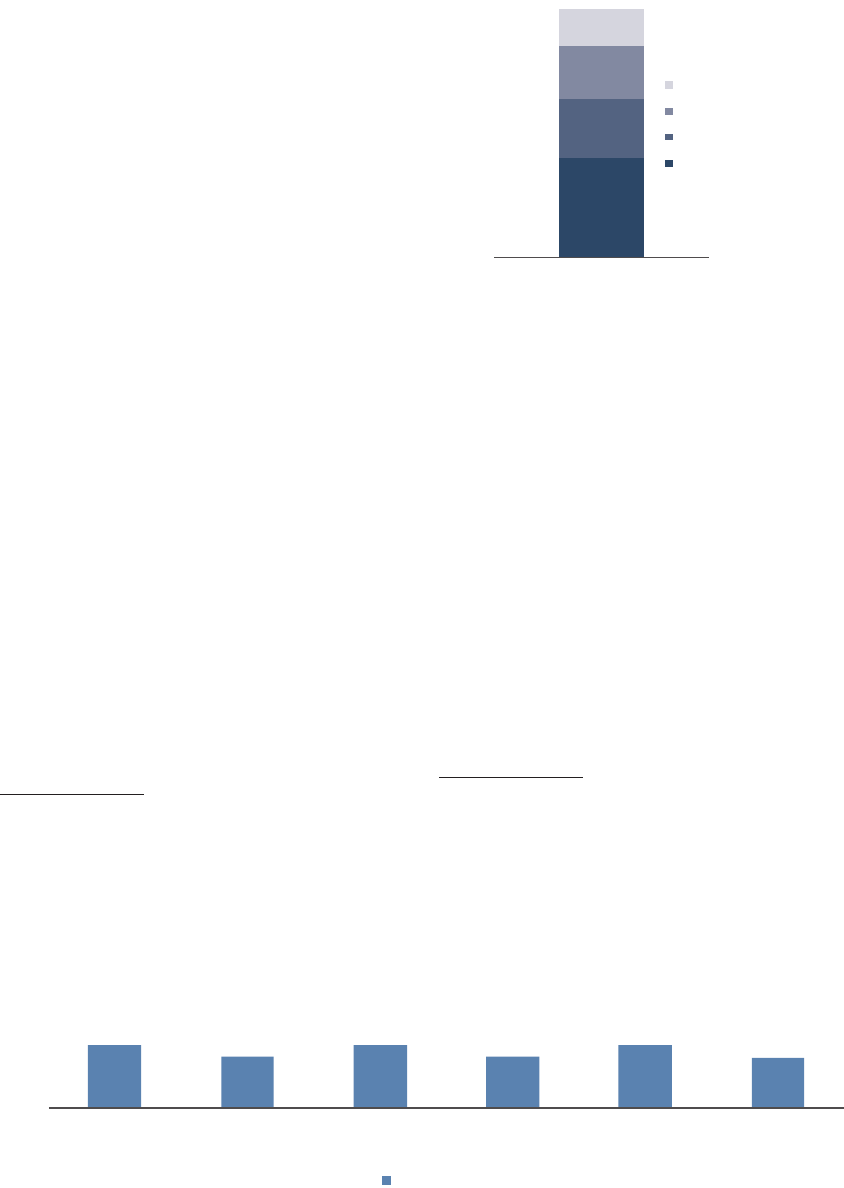
1.5. CLAIMS RATIO
Claim handling is one of the key parts of an insurance
product’s lifecycle. Claims ratios are an indicator used to
measure profitability but also consumer outcomes such as
value-for-money. Low claims ratios might suggest issues
around high volumes of denied claims or consumers not
making claims because they have not been adequately
informed about the limits of the coverage of the insur-
ance contract. It could also point towards issues around
mis-selling of a travel insurance product or customers
not having the information on the claim processes. Low
claims ratios could also indicate poor value products.
Finally, this might also indicate lower incident rates than
anticipated, consumers staying healthy during their travel
and infrequent cancellations etc.
In the IQ, the respondents reported the average claims
ratio as part of the financial ratios question. Additional
reporting on claims has been done separately, insurers
indicating the:
¡ Total number of claims;
¡ Total value of claims;
¡ Total value of claims per cover;
¡ Number of denied claims;
¡ Number of denied claims per cover.
The average claims ratio (
16
) based on the data reported
by the participants to the IQ is 40% of the GWP.
(
16
) Median claim ratio calculated as a percentage of the total gross writ-
ten premiums collected by the Insurers.
A more granular analysis on claims value per distribution
channel shows that the claims ratios are not very dierent
from one channel to another. (
17
) The claims ratio for each
distribution channel has been calculated as a percentage
of GWP. The Figure 23 presents the median claims ratio for
each distribution channel.
The lowest median claims ratio is in bancassurance (29%),
comparison websites/aggregators (29%) and other distri-
bution channels (28%).
The average and median claims ratios give a general over-
view, however a more granular analysis of the individual
claims ratios for each participant in the IQ gives a dier-
ent perspective, and shows significant dispersal in results.
(
17
) It should be noted that not all respondents were able to provide the
data on claims for each distribution channel. Some of the respondents
provided only the totals of claims value
Source: EIOPA Travel Insurance thematic review
Figure 23 – Median claims ratios per distribution channel
35%
29%
35%
29%
35%
28%
0%
20%
40%
60%
80%
100%
Direct
sales
Bancassurance Insurance
agent/broker
Comparison
website/aggregator
Ancillary insurance
intermediary
Other distribution
channel
Claims Ratios
Figure 22 - Claims ratio
40%
24%
21%
15%
0%
10%
20%
30%
40%
50%
60%
70%
80%
90%
100%
Net underwritting result
Average expense ratio
Average commission ratio
Average claims ratio
Source: EIOPA Travel Insurance thematic review
EUROPEAN INSURANCE AND OCCUPATIONAL PENSIONS AUTHORITY
22
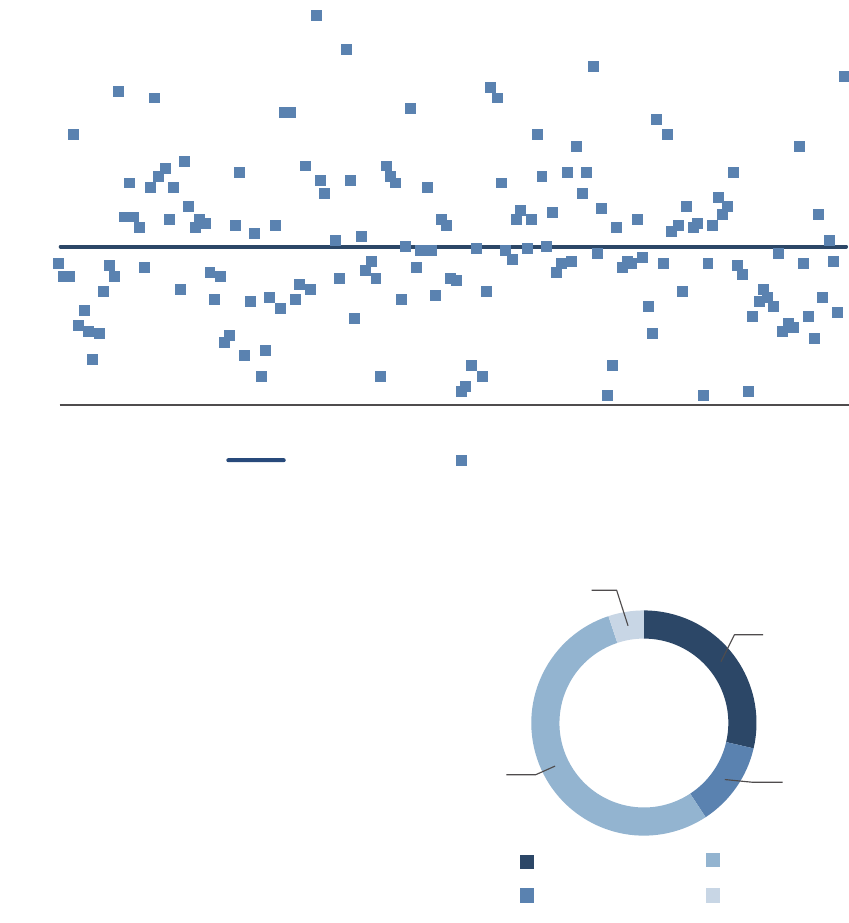
More than half of the respondents (55%) have claims
ratios below the average of 40% of the GWP. Around 15%
of respondents have claims ratios under 20% of the GWP.
In the questionnaire, the insurance companies also
reported the number of paid claims for the following
coverages: travel journey, baggage and personal eects,
medical and other. As expected, the medical claims
account for around 54% of total paid claims. Claims paid
on baggage and personal eects are accounting for 29% of
the total number of claims, and the claims on the journey
are around 12% of the total.
When looking into the value of claims paid per cover
(in Euros), based on the data reported by the insurance
companies, the medical claims account for 58% of the
total value of claims paid to consumers.
Source: EIOPA Travel Insurance thematic review
Figure 24 - Claims ratios
0%
10%
20%
30%
40%
50%
60%
70%
80%
90%
100%
Average claims ratio Claims ratios
Figure 25 – Total claims paid per cover
29%
12%
54%
5%
Journey
Baggage and personal
effects
Medical
Other
Source: EIOPA Travel Insurance thematic review
CONSUMER PROTECTION ISSUES IN TRAVEL INSURANCE: A THEMATIC REVIEW
23
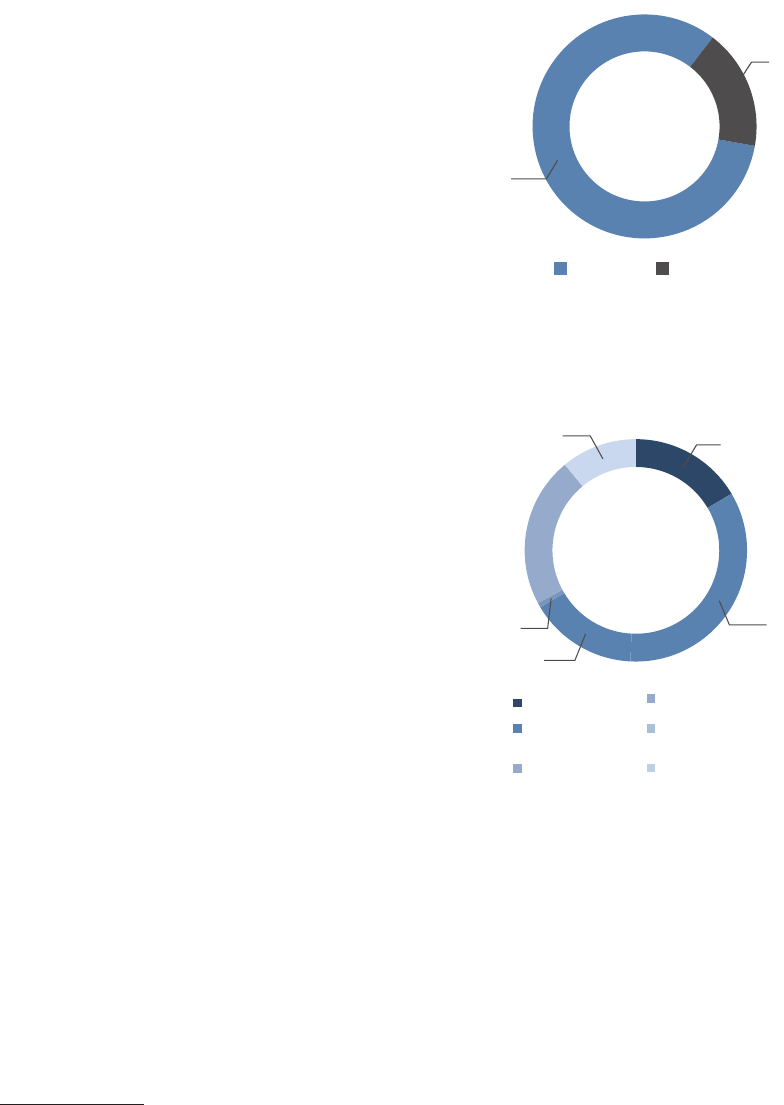
1.6. DENIED CLAIMS
Denied claims are those that have been submitted by
the policyholder and dully processed by the insurance
undertaking, which have ended without payment to the
policyholder. For the purpose of the thematic review, only
the claims that have been completely denied have been
considered. Claims partially denied were not considered
as claims denied.
Based on the data reported by the insurance undertak-
ings participating in the IQ, the total number of denied
claims accounts for 17% out of the total number of claims.
(Figure 26).
When looking at the spread of denied claims per distri-
bution channel, bancassurance (
18
) (34%) and ancillary
insurance undertakings (22%) account for more than half
of the total number of denied claims. This is in line with
the total collected GWP per distribution channel, bancas-
surance and ancillary insurance undertakings having the
highest share.
A more detailed analysis of the numbers of denied claims
out of total claims shows that:
¡ Out of 61 insurance undertakings that reported
the numbers of paid and denied claims for
bancassurance, for 28 the proportion of denied
claims out of total number of claims represents
more than the average of 17%. Moreover, for 11
of them the proportion of denied claims is above
30% of the total claims. Considering that the
travel insurance products sold via bancassur-
ance are mainly multi-trip policies (97% of the
GWP collected via bancassurance), this might
indicate that the coverage oered by some
policies does not fit consumer’s expectations
or that in some cases the terms and conditions
contain exclusions consumers are not aware of.
¡ With regard to insurance agents/ brokers out
of 75 insurance undertakings that reported the
numbers of paid and denied claims, for 25 the
proportion of denied claims is above the aver-
age of 17% of total number of claims and for 12
(
18
) The share of bancassurance in total denied claims might be higher if
to consider the data from one company that has a partnership with Visa.
The company reported the data under “other distribution channel” and
not under “bancassurance”. With regard to the share of “other distribu-
tion channel” in the total number of denied claims, there is one company
that has a partnership with Visa where its travel insurance products are
sold together with credit cards.
the proportion is above 30% of total number of
claims.
¡ In the case of comparison websites/ aggrega-
tors, out of 22 insurance undertakings that use
this channel and reported the numbers of paid
and denied claims, 11 insurers have proportions
of denied claims above the average 17% of total
number of claims and for 5 of them the propor-
tions are higher than 30% of total number of
claims.
Source: EIOPA Travel Insurance thematic review
Figure 27 – Proportion of denied claims per distribution
channel
16%
34%
16%
1%
2
2%
11%
Direct sales
Bancassurance
Insurance
agent/broker
Comparison
Ancillary insuranc
e
intermediary
Other distribution
channel
Figure 26 - Proportion of denied claims
83%
17%
Claims paid Claims denied
Source: EIOPA Travel Insurance thematic review
EUROPEAN INSURANCE AND OCCUPATIONAL PENSIONS AUTHORITY
24
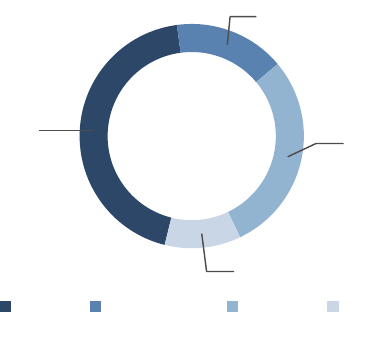
¡ For ancillary insurance intermediaries, out
of 48 insurance undertakings that reported the
numbers of paid and denied claims, 18 insurers
have proportions of denied claims above the
average of 17% of total number of claims and 8
have ratios higher than 30%.
When talking about the number of claims denied per type
of cover, the denied claims related to the travel journey
have the highest percentage of the total denied claims
(44%). Medical claims account for 29% of the total denied
claims.
As highlighted earlier in the report this might be related
to the pre-existing medical exclusions that are excluded
from the cover but are not registered at the moment of
sale of the travel insurance product. As most of the partic-
ipants in the industry questionnaire do not use medical
screening before the signing of the contract, the pre-ex-
isting medical conditions are not taken into account when
selling the travel insurance policy.
A more granular analysis of the denied claims per cov-
erage shows that those insurers that reported having a
medical screening in place before contracting a travel
insurance policy have lower percentages of denied claims
for medical coverage of the total denied claims. This could
indicate a positive impact of the medical screening on the
number of the denied claims related to medical coverage.
With an upfront medical screening, consumers are able
to declare their health situation and pre-existing medical
conditions and the insurer is able to inform the consumer
on the oered coverage
However, the data does not show a strong correlation
between the medical screening and low rate of denied
claims for the medical coverage, so conclusions must be
tentative at this stage.
Without a medical screening, the needs of the consumer
with pre-existing medical conditions may not be fully
respected, as the coverage oered by the travel insurance
product is not tailored to their individual situation (see
Section 3.4 which presents how undertakings take into
account pre-existing medical condition and causes for
potential consumer detriment).
Figure 28 - Proportion of denied claims out of total
claims per cover
44%
16%
29%
11%
Journey
Baggage
and personal
effects
Medical
Other
Source: EIOPA Travel Insurance thematic review
CONSUMER PROTECTION ISSUES IN TRAVEL INSURANCE: A THEMATIC REVIEW
25
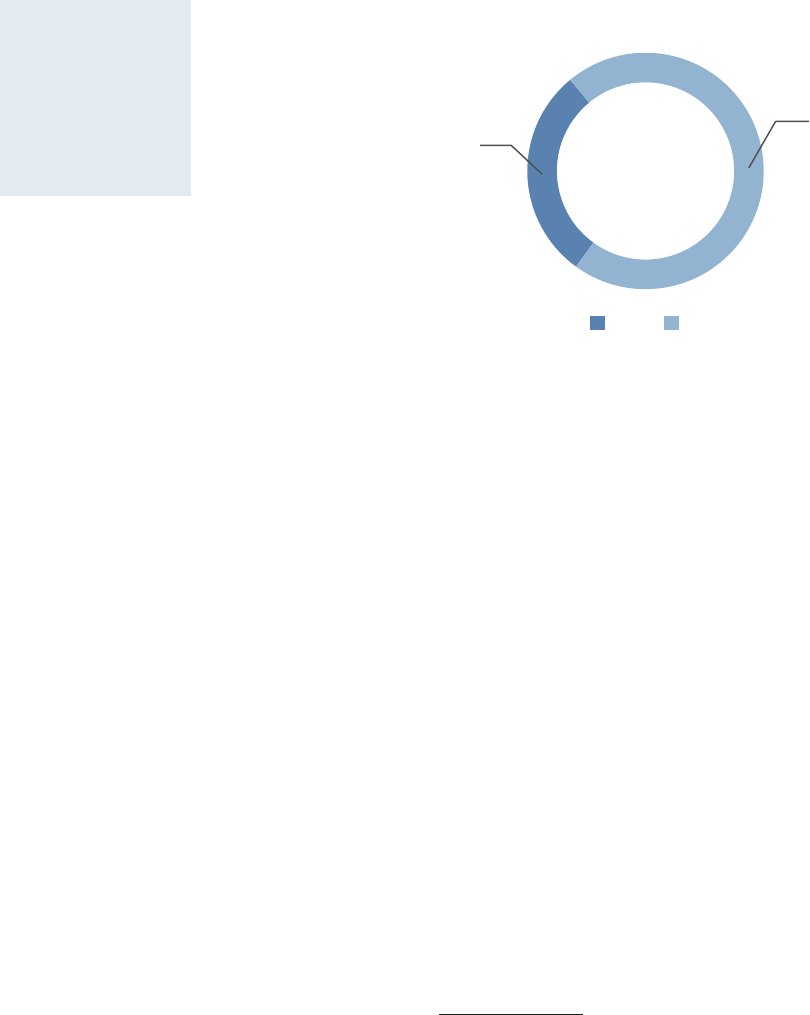
2. BUSINESS MODELS
Travel insurance related
business models vary sig-
nificantly based on the dis-
tribution strategy, product
features, and product
complexity. A business
model analysis on one
hand can help identifying
inherent conduct risk on
the other hand it can assist in understanding the impact
on digitalisation and underlying conduct risks.
2.1. CHANGES IN THE BUSINESS
MODELS
Despite a general digitalisation trend, the majority
of respondents (71%) when asked if they faced major
changes reported that no major changes have happened
in the recent years in the travel insurance market and in
the business models of the insurance undertakings.
The remaining 30% reported changes in relation to:
¡ Integrating new technologies to sell travel insur-
ance products (mobile applications and other
online distribution channels);
¡ The de-bundling of the travel insurance prod-
ucts from certain bank accounts to give custom-
ers the option to decide whether they would like
to buy the travel insurance or not.
¡ The development of tools allowing the custom-
ers to complete their end-to-end journey online,
including renewal, claims notifications and elec-
tronic notifications of loss.
One insurer mentioned in the questionnaire that there
are several Insurtech companies using new technologies
such as mobile GPS location to reach out to customers
when they are on holiday.
In fact, with changing consumer behaviours, demanding
better, easier and faster customers’ experience and more
personalized products, several incumbents are:
¡ Changing their travel insurance products (
19
);
and/or
¡ Changing their distribution strategies.
To adapt to new technologies, two insurance undertak-
ings reported outsourcing part of the business operations
to reach more customers and decrease administrative
costs.
(
19
) For example, one insurance undertaking reported its willingness to
develop new insurance products to dierentiate from other providers:
it has launched a new type of insurance for camping covering material
damages to the tent, expenses for temporary accommodation and third
party liability.
“
Some IU are
moving from
mainly direct sales
to selling online,
through compari-
son websites.
”
Figure 29 - Changes in Business Models
29%
71%
Yes No
Source: EIOPA Travel Insurance thematic review
EUROPEAN INSURANCE AND OCCUPATIONAL PENSIONS AUTHORITY
26

2.2. DIGITALISATION AND
INNOVATION - THE DRIVERS FOR
CHANGE
Technological innovations are beginning to change the
way the travel insurance market is operating. Benefits
and potential risks need to both be considered. As shown
in EIOPA’s recent thematic review on Big Data Analyt-
ics (
20
) while there are numerous benefits and opportu-
nities, risks should not be underestimated. Amongst the
specific benefits, it is noteworthy that:
¡ Consumers can increasingly buy travel insur-
ance alongside their online booking of flights or
train tickets.
¡ Web tools and mobile applications facilitating
customers’ experience and driving ecient and
optimal coverage are being developed.
¡ Purchasing online travel insurance can ena-
ble the consumer to access better information
about coverage and nudge consumers towards
paying more attention to the travel insurance
policy.
¡ The introduction of price comparison websites
is generating a more competitive field and pro-
moting comparisons.
(
20
) Big Data Analytics in Motor and Health Insurance, EIOPA – 2019
https://eiopa.europa.eu/EIOPA-reviews-the-use-of-Big-Data-Analytics
Innovation both in the insurance and tourism sector
are not the sole factor driving innovation with regard to
travel insurance products. Respondents highlighted that
consumers’ habits are also changing, with more and more
consumers switching from buying full travel package from
a tour operator to creating bespoke itineraries. Hence,
insurance companies noted that consumer’s awareness
about the need to be covered for unforeseen events while
travelling is increasing.
Finally, in a constantly ‘online environment’ more and
more customers’ segments, especially millennials, expect
to get serviced and communicate with insurers at any
time of the day. Respondents noted that quick and eec-
tive engagement with these consumers is crucial and the
development of new technologies – apps, web portals,
chatbots – is perhaps already making an eective contri-
bution.
CONSUMER PROTECTION ISSUES IN TRAVEL INSURANCE: A THEMATIC REVIEW
27

2.3. NEW DIGITAL DISTRIBUTORS
OF TRAVEL INSURANCE
Participants reported that transport companies with large
customer bases and direct customer interfaces, such as
airlines, have started to enter the travel insurance indus-
try, mostly as distributors. The business models used by
such companies are not only having an impact on the
insurance industry but can have a potential detrimental
impact on consumers (see Section 4.1.2 on commissions
and Section 4.3).
In fact, they often operate as business originators and lev-
erage their large customer base and market power when
setting the terms of the distribution agreement with
insurance undertakings.
Around 30% of respondents have worked with these
partners and reported some benefits relating to this busi-
ness model such as: enabling them to easily and rapidly
increase their customer base giving more access to travel
insurance as well as allowing them to integrate travel pat-
terns/travel behaviour data in their risk models.
However, they have also indicated that some of these
companies set upfront (unnegotiable) commission rates,
often more than 60% plus additional fees on exclusivity,
marketing, IT costs, etc. (
21
) This not only aects market
dynamics but also creates new sources of consumer det-
riment (see Section 1.4 on commissions) or increase the
scale of existing potential detriment.
(
21
) For example, one respondent reported that its average paid commis-
sion to OTAs are around 70%-75% of the written premiums.
BOX ONE RESPONDENT IN THE
INDUSTRY QUESTIONNAIRE
“We have taken part in an oer to sell travel insur-
ance to an airline company, we came second. We
also took part in a tender to provide credit card
travel insurance to a newly merged bank. They
had very strict requirements about the coverage
to be oered and it was made clear that price is
the key factor in deciding. It was also implied that
we could get creative with exclusions in coverage.
We came second again.”
Source: EIOPA Travel Insurance thematic review
EUROPEAN INSURANCE AND OCCUPATIONAL PENSIONS AUTHORITY
28

2.4. EMERGING BUSINESS
MODELS – BIG TECH ENTERING
THE MARKET
The increase in online distribution may be further
boosted as online travel specialists (
22
) play an increas-
ing role in distribution and if large technological/internet
companies (
23
) enter the travel insurance market, at least
as a first step, in distribution. Companies in other sectors
with a distribution network and a large pool of customers
(e.g. supermarket chains) are also potential contenders to
entering the market as intermediaries.
Players like Google, Amazon, Facebook and Apple
(GAFAs) are already providing financial services to their
customers and some have been starting to take steps
to enter the insurance market. (
24
) Due to their financial
capacity, large scale, trusted reputation, brand recogni-
tion and access to a large customer base and personal
data, they have the capacity to be important disrupters.
Rather than operating as conventional insurance interme-
diaries, new entrants may operate as business originators
and aggregators.
When answering whether new large entrants will change
the dynamics of the market and create new sources of
consumer detriment or increase the scale of existing
ones, respondents indicated that these changes are yet to
happen, but also articulated extensive concerns.
It was noted how new entrants would be in a strong posi-
tion to leverage their large customer base and market
power and squeeze business margins potentially at the
(
22
) E.g. Bookings.com, TripAdvisor, Expedia or Trivago.
(
23
) E.g. GAFAs (Google, Amazon, Facebook and Apple).
(
24
) E.g. Amazon Protect provides accidental damage insurance to prod-
uct bought via Amazon; Apple oers limited insurance for its own prod-
ucts via Apple Care; Google Compare, which was discontinued in 2016,
was an online comparison tool for, among others, car insurance.
detriment of the insurance sector and/or consumers. In
addition, as already noted, they may also be able to set
the terms of distribution agreements with insurance
undertakings by setting upfront commission rates when
putting up their ‘distribution business’ for tender among
competing insurance undertakings.
In EIOPA’s thematic review on Big Data Analytics, a spe-
cific part was dedicated to how Big Tech firms could enter
the insurance market. In the questionnaire circulated to
the industry,
“the majority of respondents stated that
they have observed an increasing interest of some Big
Techs in entering the insurance market.”
(
25
)
Respondents to the current thematic review broadly
endorsed the same picture: Big Tech firms have an unu-
sually large customer base and access to large amounts
of dierent types of data, which are not available to tra-
ditional insurance companies. Should Big Techs decide to
enter the insurance market, many insurance firms consider
that this would take place in the form of intermediaries /
brokers / price comparison websites; they consider that
they could disrupt the distribution of insurance products
by selling insurance products through their platforms.
This is even more relevant for the travel insurance mar-
ket since online price comparison websites are already in
place selling travel insurance products.
Participants in both questionnaires indicated that large plat-
forms with strong bargaining power could define the ‘rules
of the game’ by favouring certain products in the ranking
criteria of their platforms or by controlling the entities that
can sell products through their platforms.
(
25
) Big Data Analytics in Motor and Health Insurance, EIOPA – 2019
https://eiopa.europa.eu/EIOPA-reviews-the-use-of-Big-Data-Analytics
CONSUMER PROTECTION ISSUES IN TRAVEL INSURANCE: A THEMATIC REVIEW
29
2.5. RISKS FOR DISTRIBUTORS
NOT INTEGRATING NEW DIGITAL
MODELS
Digitalisation has already started transforming the travel
insurance market. With new digital distributors acquiring
parts of the markets, traditional distributors might be
impacted by the new developments.
As reported by the insurance companies in the IQ, those
insurance distributors that will not adapt to the new envi-
ronment and will not integrate the new technologies in
their distribution models might face some challenges and
risks.
¡ The main risks highlighted by the respond-
ents are the risk of losing potential customers
and the risk of reduction in market share. Due
to changes in consumer behaviour and buying
preferences, distributors that do not integrate
new technologies and do not implement digital
distribution channels will not be able to survive
in an environment of market consolidation. They
may experience significant drop in sales and
face issues around decreasing profitability and
business sustainability.
¡ Traditional distributors risk becoming too
expensive for customers that buy similar travel
insurance products online, therefore, they
might have to lower their commission levels in
order to maintain contracts and business rela-
tions with insurers. Traditional oine agencies
require investments in sales animation and mar-
keting campaigns, which are key for stable sales
but that can become very costly.
¡ In the era of digitalisation and development
of online sales, it is anticipated that traditional
distribution channels (brokers, tied-agents, call
centres) will gradually disappear.
¡ The traditional geographic broker or the niche
provider often does not have the same market-
ing and digital customer journey expertise as
Insurtechs. This means they cannot reach cus-
tomers in a cost-eective way, or their websites
do not appeal on mobile channels compared to
the new, responsive designs.
¡ Finally, the insurance distributors that would
not use digital channels to sell travel insurance
may have to identify niche markets fulfilling the
needs of a specific target market.
EUROPEAN INSURANCE AND OCCUPATIONAL PENSIONS AUTHORITY
30
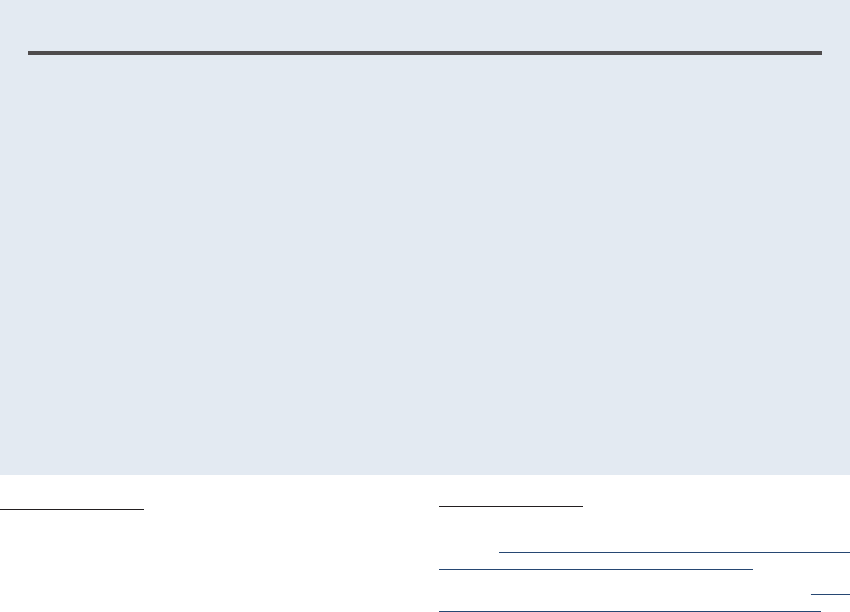
3. IDENTIFIED ISSUES IN PRODUCT DESIGN
All types of travel insurance were within the scope of the
thematic review except for products covering long uninter-
rupted stays abroad, given their unique purpose and char-
acteristics, in particular with regard to the specific cover
they oer (in most cases limited to explicit medical costs).
3.1. PRODUCT COMPLEXITY
Insurance is, in general, a complex area for consumers to
understand.
The design of travel insurance products might increase
the level of complexity when compared to other similar
types of insurance. Significant variations exist regarding
the type and the level of coverage and applicable restric-
tions and exclusions. Travel insurance policies can include
various coverages like medical expenses, private liabil-
ity, personal accident, trip cancellation, loss of baggage,
etc. For instance, a medical condition that is excluded in
one policy might be included in another (
26
). This level of
(
26
) Especially for consumers with pre-existing medical conditions, this
may be dicult since the conditions on and the result of a prior approval
can dier from undertaking to undertaking.
diversity is indicative of a high level of complexity in the
market.
Product complexity has an impact on consumers’ ability to
fully understand the product in particular with regard to the
level and extent of cover. Terms and conditions may also
be complex and dicult to understand, in particular with
regards to the use of technical medical terms linked to med-
ical coverage (and exclusions). This in addition to the con-
text and manner in which travel insurance policies are sold.
High complexity makes it dicult for consumers to nav-
igate the market, compare coverages and prices and find
the insurance policy that best fits their needs.
The majority of respondents to the IQ indicated, however,
that from their perspective, travel insurance products do
not have a high level of complexity and that the products
are not assessed for complexity. Moreover, most of the
respondents reported that no restrictions on selling spe-
cific travel insurance products are applied when it comes
to distribution channel or type of customer.
BOX COMPLEXITY OF TRAVEL INSURANCE POLICIES
The complexity and diversity of products available on
the market can also be a source of detriment for con-
sumers. Customers expect travel insurance to cover any
eventuality. However, the reality is that no two policies
are alike, and travel insurance policies often comes with
strict limitations and exclusions as to the type of cover
that is provided and the amount an insurer may have to
pay. Consumers’ organisations therefore frequently warn
consumers to carefully consider the fine print to under-
stand which risks are covered. The extensive usage of
exclusions in contracts can contribute to product com-
plexity for consumers and impede their ability to suc-
cessfully navigate and compare the market. This is also
complicated by the fact that the terms and conditions
of insurance policies are not always straightforward. For
instance, a recent Which? study (
27
) found that insurance
policy document can be so hard to understand that uni-
versity-level reading abilities may be required to make
sense of them and even industry experts struggle to
cut through the jargon. Our Austrian Member Arbeiter-
kammer found that even subtle language dierences in
the terms and conditions of travel insurance policies can
have a significant impact on whether an individual will
be covered by the policy or not. (
28
)
Source: BEUC
(
27
) Which?, Crime and punishment: insurance policies complex and full
of jargon. https://press.which.co.uk/whichpressreleases/crime-and-pun-
ishment-insurance-policies-complex-and-full-of-jargon/
(
28
) Arbeitkammer, ‘Reisestornos – Blick ins Kleingedruckte lohnt sich’, https://
www.arbeiterkammer.at/beratung/konsument/Reise/Reisestornos.html
CONSUMER PROTECTION ISSUES IN TRAVEL INSURANCE: A THEMATIC REVIEW
31
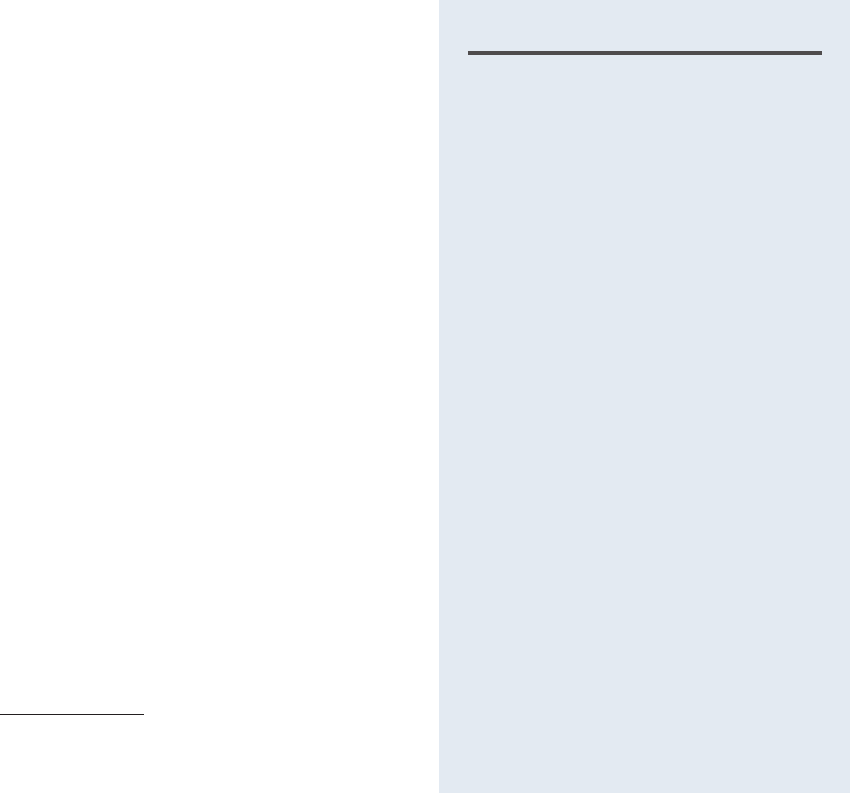
3.2. TERMS AND CONDITIONS-
TRANSPARENCY AND
DISCLOSURE
On average around 17% of the complaints consumers
make, are related to the terms and conditions of a travel
insurance policy. This indicates that there might be some
issues on how terms and conditions are disclosed and
explained to consumers. (see Section 5 on complaints).
Providing clear and transparent information to customers
is key. Moreover, consumers tend to pay very little atten-
tion to what is indicated in the terms of an insurance pol-
icy. The responsibility is shared between the insurers and
distributors on one side, making sure that they put eorts
into explaining them and on the consumers on the other
side, making sure that they acknowledge and understand
the products as well as the terms and conditions.
¡ A large majority of insurance undertakings par-
ticipating in the questionnaire reported that
terms and conditions of their travel insurance
products are available and presented to the con-
sumers before contracting a policy.
¡ In most cases, terms and conditions are published
on the websites and available for download.
Depending on the distribution channel the terms
and conditions are shared with the customers in
electronic or in paper form, by email or by post.
¡ Respondents mentioned initiatives like bro-
chures, factsheets and flyers that present infor-
mation on the travel insurance products in ‘clear
and simple’ language. Moreover, a comprehen-
sive and user-friendly product explanation is
available on some insurers’ websites that explain
the scope of coverage oered by a product.
¡ One respondent mentioned that along the terms
and conditions, consumers receive a file with fre-
quently asked questions (FAQs), a detailed bene-
fits table and a summary with the policy wording.
¡ In view of the application of the Insurance
Distribution Directive (IDD), two respondents
reported in the IQ, the use of the Insurance
Product Information Document (IPID) (
29
)
already in 2017. The IPID provided to customers
(
29
) Under the Insurance Distribution Directive (IDD), consumers bene-
fit from a simple, standardised insurance product information document
(IPID), which aims to provide clearer information on non-life insurance
products, so that consumers can make more informed decisions.
details on the key features of the product,
exclusions, limitations and coverage.
As a general measure, prior to the contract conclusion,
some respondents ask the customers to confirm that it
has received sucient information about the insurance
contract and the insurance contract complies with its
needs and requirements.
However, there are cases where the terms and conditions
are not very clear and do not provide the adequate infor-
mation. For example, when it comes to trip cancellations,
in some cases insurers do not provide details with regard
to accepted reasons for cancellations. Some insurers may
not specify in the terms and conditions of the travel insur-
ance policy in which cases the trip cancellation will not be
covered by the policy. The use of general terms like “force
majeure” or “serious illness” without give concrete details
on these situations can raise confusion for the consumer.
BOX ISSUES RELATED TO TERMS
AND CONDITIONS
Trip cancellation insurances mostly have a clause
which includes “unexpected serious illness”
(“unerwartet schwere Krankheiten”) as reason for
trip cancellation. However, insurer X did not explain
in its terms and conditions which illness could be
considered as “unexpected” as well as “serious” (e.g.
pneumonia or influenza). That is why BdV consid-
ered this clause as non-transparent and therefore
not applicable and went to court.
Only shortly, after this action, the Association
of German Insurers (GDV) asked BdV for a
settlement of dispute resulting in a press release
amending the standard policy.
The amendment consisted in providing an addi-
tional explanation of the criteria of “unexpected”
and of “serious” with regard to illness by elucidat-
ing several examples. Although these standard
policy conditions are non-binding, the insurer X
included these additional explanations in its terms
and conditions for the new trip cancellation con-
tracts. The court has not yet decided with regard
to the previous similar cases.
Source: Bund der Versicherten (BdV)
EUROPEAN INSURANCE AND OCCUPATIONAL PENSIONS AUTHORITY
32
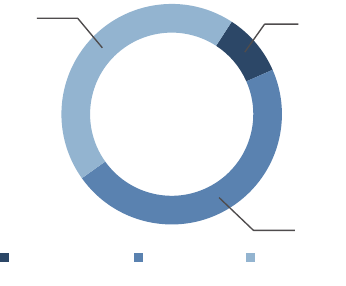
3.3. PRODUCT DIVERSITY AND
PRODUCT STANDARDIZATION
Product diversity and/or tailor-made products may be
advantageous for consumers since these products may
be able to better meet specific needs to a greater extent
than standardized products. On the other hand, product
diversity may enhance the complexity of those products
and make them dicult to compare.
(Apparent) product standardization also bears the risk of
consumers being under or over-insured if available prod-
ucts either do not meet their specific needs or have cov-
erage (and costs) above the customers’ needs. The risk of
a lack or of underinsurance is especially relevant for hold-
ers of annual policies. These policies tend to have little
or no possibility of adjusting the terms during the life of
the contract, while customer needs may change depend-
ing on the characteristic of each trip (e.g. need for addi-
tional cover for sports and adventure activities or travel
to remote locations).
Based on the answers to the questionnaire (Figure 30),
around 47% of the travel insurance products are stand-
ardised. However, 44% of respondents reported using the
modular architecture approach, whereby the policyholder
is able to tailor his policy by selecting from a significant
range of pre-set coverages, resulting in individualised
insurance policies.
Figure 30 - Approach to product oering
9%
47%
44%
Modular
architecture
Standard
packaged
Combination
of above
Source: EIOPA Travel Insurance thematic review
CONSUMER PROTECTION ISSUES IN TRAVEL INSURANCE: A THEMATIC REVIEW
33

3.4. PRE-EXISTING MEDICAL
CONDITIONS
Exclusions in cover are
a crucial element in the
design of insurance prod-
ucts and travel insurance
is no exception. Terms
and conditions normally
list the various types and
circumstances, which are
excluded from cover. The
most common exclusions
are linked to pre-existing medical conditions.
Exclusions have a direct impact on the quality (type and
coverage level) and the value of the product. From a con-
sumer perspective, it is also important that clear, ade-
quate and timely information is provided about applicable
exclusions. Otherwise, customers may either be unaware
or have a wrong understanding of the exact level of cover
they actually have.
When it comes to travelling with pre-existing medical
conditions, it is very important that consumers are aware
of the coverage they have and understand the limits of
their travel insurance policy. (
30
) Travellers should inform
undertakings about their conditions in order to get the
best policy for them and avoid taking huge risks of travel-
ling under-insured. Moreover, insurers should inform cus-
tomers about the pre-existing medical conditions that are
excluded in the travel insurance policy. Ideally, an insurer
would advise the consumer on the options available to
buy adequate and appropriate travel insurance based on
their medical conditions. (
31
)
In the questionnaire, participants have been asked to
answer what type of cover is generally oered for con-
sumers with pre-existing medical conditions and whether
they are excluded or a higher premium is charged.
(
30
) A recent paper on ‘Access to insurance’ for people with pre-existing
medical conditions, published by the Financial Conduct Authority (FCA)
in the UK, highlighted the issues faced by this category of consumers
when buying travel insurance policies. The worst case for a traveller with
pre-existing medical conditions is travelling thinking that it has the right
insurance coverage when in fact it does not. Travelling to destinations
like the USA, where the cost of medical treatment is very expensive,
without an appropriate travel insurance policy can be a disastrous situa-
tion for the consumer. Feedback statement on “Access to Insurance”, the
FCA – June 2018 https://www.fca.org.uk/fs18-01.pdf
(
31
) According to the Association of British Insurers (ABI), a four-day stay
in a hospital would cost on average €37,000 and a stroke in the USA
would cost up to €880,000. https://www.abi.org.uk/the-abi-reveals-the-
jaw-dropping-costs-of-falling-ill-abroad-this-year
Around 70% of the respondents exclude pre-existing
medical conditions from the oered cover. However,
some insurers would cover the expenses for emergency
measures for saving the life of the insured up to a maxi-
mum of €500 Euros or €1000, dierent insurance compa-
nies apply dierent ceilings. Some respondents indicated
that they would also cover the expenses for medical assis-
tance for saving the life of the insured without mention-
ing maximum costs to be paid.
Some insurance undertakings only excluded pre-existing
medical conditions if the insured has been hospitalised,
treated by a physician or experienced a change in its con-
dition six months prior to the trip. Insurers would also
apply additional criteria when excluding the pre-existing
medical conditions, for example if the insured had a
change in its medication, refused to take treatment,
omitted to go to pre-arranged controls, etc.
Out of those 30% of insurers that include pre-existing
medical conditions in the travel insurance policy, one
third of respondents charge a higher premium, whereas
the remaining two thirds include them at no additional
charge.
Some insurers use medical screening tools to assess the
risks and calculate the premiums. This is very relevant
especially in the case of consumers with pre-existing
medical conditions. Participants in the IQ have been
asked if they have in place a medical screening for per-
sons with pre-existing medical conditions.
Around 72% of respondents indicated that they do not use
medical screening before contracting a travel insurance
policy. However, some of the insurance undertakings
indicated that in case of a claim, the consumer is asked to
provide a medical report or pass a medical evaluation by
a doctor appointed by the insurer. Based on this medical
screening by the insurer a decision is taken on the accept-
ance or denial of the claim.
“
Around 70% of
insurers exclude
pre-existing med-
ical conditions
from the oered
cover
”
EUROPEAN INSURANCE AND OCCUPATIONAL PENSIONS AUTHORITY
34
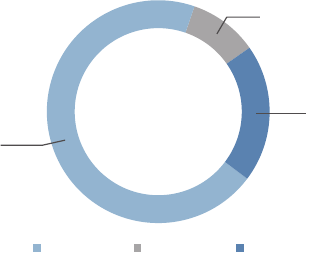
Figure 31 - Pre-existing medical exclusions
70%
10%
20%
Condition
excluded
Higher
Premiums
Condition
Included
Source: EIOPA Travel Insurance thematic review
One respondent mentioned that in case of a suspicious
claim, the medical sta would require the medical history
of the insured to determine whether the incident has
been caused by a pre-existing medical condition.
Such practices are not very eective, and might raise
consumer detriment. As highlighted earlier in the report,
most of the insurers participating in the IQ exclude the
pre-existing medical conditions from the cover oered by
their travel insurance policies. When this information is
communicated beforehand, the consumer with pre-exist-
ing medical conditions has the option to look around for
other travel insurance products that cover its individual
situation.
But in the case where a consumer buys a travel insurance
product with the thought in mind that it has the right cov-
erage and when a medical incident happens, the insurer
undertakes a medical screening in order to identify if the
incident is caused by a pre-existing medical condition,
this comes as a surprise to the consumer. Because in this
situation, the medical costs would not be covered by its
travel insurance policy, therefore, the value for the con-
sumer of the purchased insurance product in this case is
very poor (see Section 1.5 on claims ratio).
Issues around transparency and disclosure to consumers
on these exclusions are key for persons with pre-existing
medical conditions.
The remaining 28% of insurers use medical screenings to
get more information on the pre-existing medical condi-
tions of the consumers before contracting a travel insur-
ance policy. Some of the medical screening tools used by
dierent insurers are:
¡ Online questionnaire on pre-existing medical
conditions;
¡ On the phone with an agent asking questions
on these conditions;
¡ A doctor selected by the insurer studying the
medical record of the patient in coordination
with the local medical team where the patient
lives;
¡ Analysis of a copy of the medical history issued
by patient’s generalist doctor;
¡ Declaration from the consumer on his pre-exist-
ing medical conditions;
¡ Individual medical screening by an appointed
doctor;
¡ Evaluation of the medical file by an in-house
medical team;
¡ Outsourcing the medical screening to an exter-
nal emergency call centre;
¡ Set of questions answered by the consumer and
processed with a risk rating tool provided by a
specialised company;
¡ Provision of medical certificates from a
generalist doctor.
CONSUMER PROTECTION ISSUES IN TRAVEL INSURANCE: A THEMATIC REVIEW
35

3.5. OVER-INSURANCE AND
DOUBLE INSURANCE
Over-insurance arises when the level of cover is higher
than needed by the customer (
32
). This can be a poten-
tial source of consumer detriment in the form of higher
costs without equivalent cover if the customer is unable
to adjust the level of cover to his needs or chose a dier-
ent product.
Double insurance arises when there is an overlap in cover
from dierent policies held by the same policyholder.
In case of subsidiarity, customers end up paying for the
same risk twice but are only compensated once. Double
insurance appears to be particularly relevant where an
annual policy exists subsequent to which add-on to credit
cards or bank accounts are oered or sold together with
another insurance policy.
For example, 97% of the GWP collected via bancassur-
ance is coming from multi-trip policies. Out of 63 insur-
ance undertakings that reported selling their products
through bancassurance, 23 collect more than 50% of the
total GWP via this distribution channel. For 9 insurance
undertakings selling mainly multi-trip policies via bancas-
surance, the claims ratios are inferior to 40% of the GWP.
This could mean that consumers might be purchasing
annual travel insurance policies with their credit cards and
not be aware of it. In this case, double insurance might
occur - consumers having multiple insurance policies for
the same risks.
Most of the respondents to the IQ reported that the
assessment of an overlap in cover from dierent insur-
ance policies held by the same policyholder is not part of
the sales process.
Some insurers assess the overlap in cover only at the
claim management stage in order to identify which policy
will cover the incident. If the incident would be to happen,
the travel insurance policy will cover only the exceeding
sums not covered by the primary insurance held by the
consumer. Respondents also mentioned that in case of
a claim where the policyholder holds another insurance,
the expenses are split between the two insurance under-
takings on a pro-rata basis.
(
32
) E.g. if the cover for lost luggage is high but the customer only has
hand luggage of low value.
Some insurance undertakings mention in their terms and
conditions that in the case of a claim where the consumer
has another insurance policy covering the same risks, the
claim will be denied.
However, some respondents reported that before con-
tracting a travel insurance product the consumer is asked
about other policies that might cover the same risks. In
the case if the consumer has an existing policy that cov-
ers the same risks, the insurer would make a discount in
premium.
Although it must be acknowledged that consumer detri-
ment resulting from over-insurance and double insurance
could potentially be minimized at the point of sale (
33
),
this could be also feasible at the product development
and design stage. For instance, in which concerns medical
cover, it is worth considering if travel insurance comple-
ments public medical services, i.e., by covering the costs
that are charged to customers rather than the full medical
cost. In this regard, a special reference must be made to
the European Health Insurance Card (EHIC).
The EHIC is a free EU-wide health care cover which gives
access to public healthcare for citizens from EU-member
states, Norway, Iceland, Liechtenstein and Switzerland
on equal conditions as the citizens of the country visited.
With regard to the EHIC, consumer detriment may arise
under various scenarios. There might be a case of over-in-
surance if the travel insurance policy is not complemen-
tary to the EHIC, that is, when the insurance product is
not designed on top of the cover provided by the EHIC.
Customers may end up paying for a (partly) health cover
they already have. A contrasting risk to over-insurance
arises if consumers believe that the EHIC is a replacement
for travel insurance. In this case, they might end up hav-
ing to cover themselves medical expenses in excess of the
limits under the EHIC.
(
33
) E.g. through adequate consumer on-boarding procedure such as
questioning customers about other insurance policies they may have
covering the same risk.
EUROPEAN INSURANCE AND OCCUPATIONAL PENSIONS AUTHORITY
36
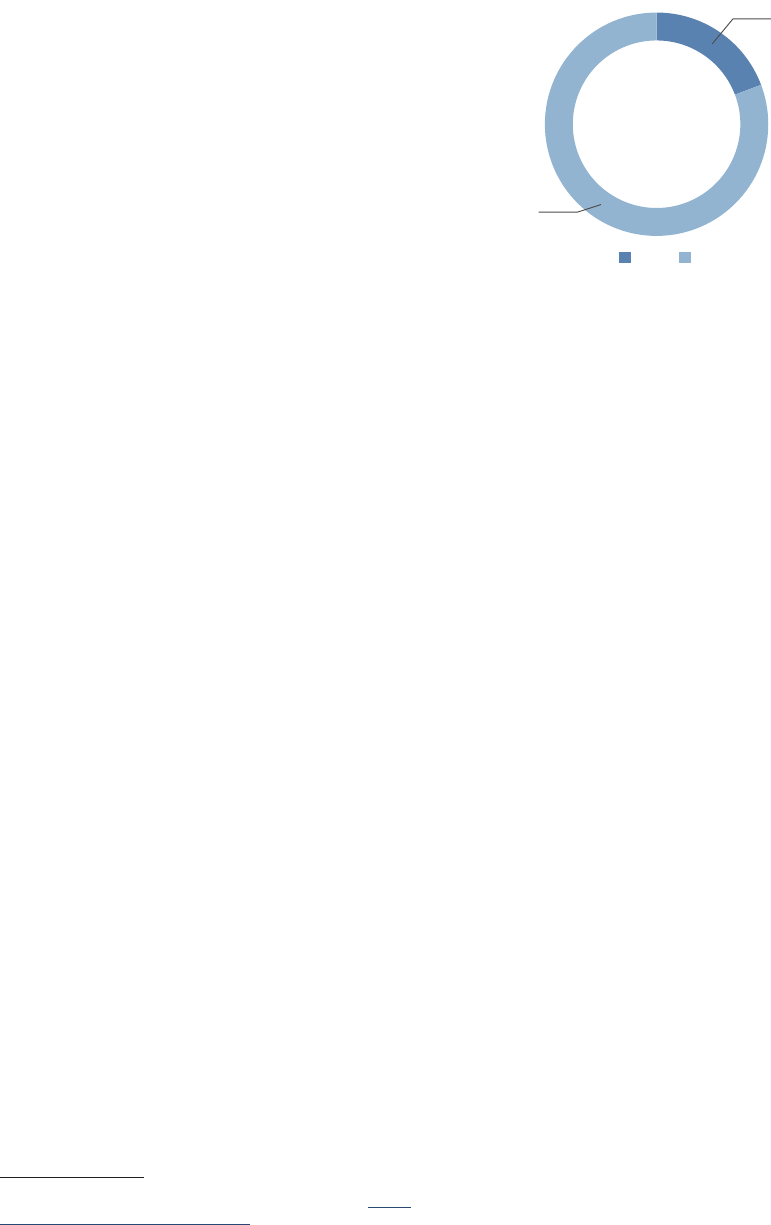
Around 81% of the insurers participating in the IQ
reported that their travel insurance products are not tak-
ing in consideration the EHIC. Moreover, respondents
indicated that no information is given to consumers on
the EHIC.
According to Eurostat, three out of four trips made by EU
citizens (74.4%) were domestic trips in their own country
of residence. Out of the remaining 25.6% of trips made to
a foreign country, 19.8% were made to another EU Mem-
ber State and only 5.8% outside the Union. (
34
) Therefore,
the importance of having the EHIC is obvious. Europeans
travel most of the time within the EU.
(
34
) Tourism statistics – top destination in 2017, EUROSTAT https://
ec.europa.eu/eurostat/statistics-explained/
Figure 32 - Products built on EHIC
19%
81%
yes no
Source: EIOPA Travel Insurance thematic review
CONSUMER PROTECTION ISSUES IN TRAVEL INSURANCE: A THEMATIC REVIEW
37
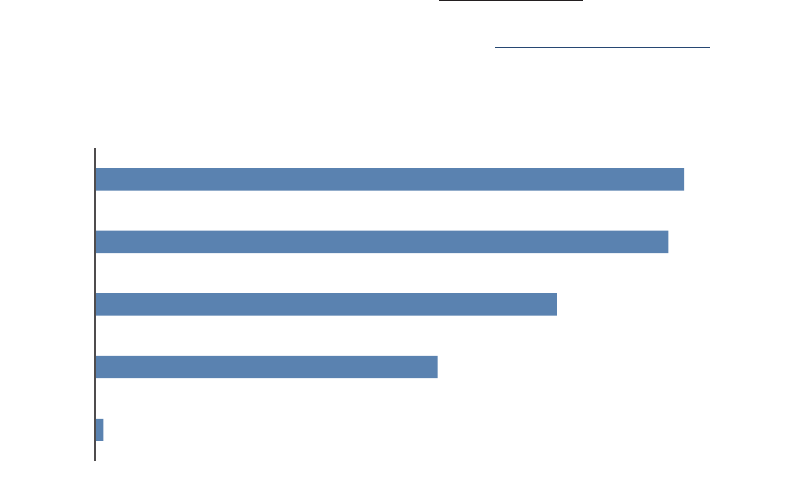
3.6. PREMIUM CALCULATION –
FACTORS CONSIDERED
Insurance undertakings take in consideration various
factors when calculating the premiums charged to the
consumers. For travel insurance policies, the main two
factors for the premium calculation of single-trip and mul-
ti-trip policies are the duration of the trip and the destina-
tion. Longer trips and holidays in exotic destinations will
be insured at higher prices. Other factors like the age of
the traveller is also taken in consideration. Some insurers
provided other factors that are considered for premium
calculation:
¡ Type of activities carried during the trip;
¡ Pre-existing medical conditions;
¡ Total price of the trip;
¡ Number of travellers;
¡ Means of transport;
¡ Number of claims.
Figure 33 and 34 show that a big majority of respondents
(99%) reported that the gender of the traveller is not
considered when calculating the premium paid by the
customer.
However, two insurers reported that they take in account
the gender of the traveller when calculating the premium.
This is discriminatory and should not be taking place, the
sex of the insured person should not be considered in
the pricing of travel insurance products. A ruling of the
European Court of Justice in 2011 in the Test-Achats case
(C-236/09) (
35
) clearly states that the Directive 2004/113/
EC prohibits the use of gender as a factor in the calcula-
tion of insurance premiums.
(
35
) Judgement in the Test-Achats case (C236/09) of the European Court
of Justice http://curia.europa.eu/juris/C-236/09
Figure 33 - Single-trip policy
1%
57%
77%
96%
99%
0% 20% 40% 60% 80% 100% 120%
Gender
Other
Age
Destination
Duration
Source: EIOPA Travel Insurance thematic review
EUROPEAN INSURANCE AND OCCUPATIONAL PENSIONS AUTHORITY
38
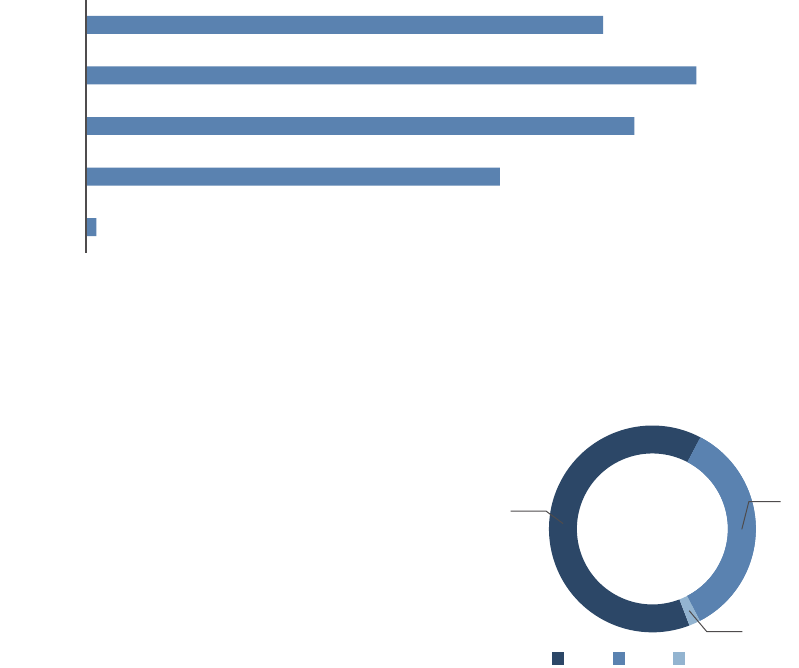
Around 35% of respondents, as showed in Figure 35, indi-
cated that the premiums vary depending on the type of
the distribution channel. In most of the cases, those cus-
tomers that buy the travel insurance products directly on
the insurers’ websites would benefit from a discount. As
reported by the participants in the IQ, each distribution
channel has dierent expenses dependant on the com-
mission levels, administrative costs, claims ratio and IT
costs.
Figure 35 - Premium variation per distribution channel
64%
35%
2%
No
Yes
Don't Know
Source: EIOPA Travel Insurance thematic review
Figure 34 - Multi-trip policy
1%
58%
77%
86%
72%
0% 20% 40% 60% 80% 100%
Gender
Other
Age
Destination
Duration
Source: EIOPA Travel Insurance thematic review
CONSUMER PROTECTION ISSUES IN TRAVEL INSURANCE: A THEMATIC REVIEW
39

4. DISTRIBUTION AND SALES PROCESSES
Travel insurance is distributed through a variety of dis-
tribution channels (
36
), allowing undertakings to reach a
large customer base and providing customers with ease
of purchase and convenience. It is not uncommon for
the same insurance product to be distributed through
various channels. However, while the product can be the
same, potential consumer detriment may dier in magni-
tude depending on the distribution channel(s) used. For
instance, dierences in premiums, commission levels or
claims ratios or a combination of these per distribution
channel would point to such dierences being present
and relevant.
Such dierences could be linked to the ability of dierent
distribution channels to discriminate between custom-
ers, target specific customer groups or take advantage
of consumer behaviour. In this sense, the dierences in
indicators could result from dierences in sales practices.
A quantitative assessment is set out above in Section 1.4
and 1.5, which found that:
¡ In bancassurance 47% of insurers pay maxi-
mum commission rates of 40% of the GWP and
more. The median claims ratio in bancassurance
is 29% of the GWP.
¡ Around 23% of insurers pay maximum com-
mission rates of more than 50% of the GWP to
insurance agents/brokers. The median claims
ratio is 35% of the GWP.
¡ Ancillary insurance intermediaries receive
the highest commissions, over 40% of insur-
ers reported paying maximum commissions of
more than 50% of the GWP going up to 80%-
90% of the GWP. The median claims ratio is
around 35% of the GWP.
(
36
) E.g. direct underwriting, insurance brokers and agents, mainstream
travel agents, tour operators, airlines, ferries/railway operators, banks
and credit card providers and online travel specialists.
¡ For comparison websites/aggregators,
although still at an incumbent stage, one third
of insurers that use this distribution channel
reported paying maximum commission rates of
more than 55% of the GWP. The median claims
ratio is around 29% of the GWP.
In the sections to follow we summarise qualitative input
provided through the IQ and from stakeholders.
4.1. CROSS SELLING
AND ADD-ONS
Travel insurance is frequently sold by a wide variety of
distribution channels through cross-selling as an ancil-
lary product to travel tickets or other travel packages.
As noted above, it is also often oered as an add-on to
other (non-travel) primary products like credit cards, bank
accounts or other types of insurance.
EUROPEAN INSURANCE AND OCCUPATIONAL PENSIONS AUTHORITY
40

BOX TRAVEL INSURANCE AS AN “ADDON”
“Market studies by our members show that such
‘add-on’ travel insurance policies oered by travel
agents and airliners often oer poor value for con-
sumers. For instance, in 2013, our Dutch member,
Consumentenbond carried out a ‘mystery shopping
exercise’ (
37
) to study the add-on policies oered by
travel agents in the Netherlands. Mystery shoppers
were sent to 100 travel agents to inquire about a pack-
aged holiday. Three in four times, mystery shoppers
were oered an ‘add-on’ insurance by the salesperson.
While the add-on policies oered by the travel agents
provided adequate cover to consumers, the policies
were among the most expensive available on the Dutch
market. The salespersons selling the insurance were not
always knowledgeable about the terms and conditions
of the policies they sold, and strongly encouraged mys-
tery shoppers to take out the add-on insurance oered
by them. Travel agents also encouraged customers to
take out insurance with larger coverage, even though
a more limited insurance may have been an equally or
potentially better choice for the consumer.”
Source: BEUC
BOX ISSUES IN DISTRIBUTION MODELS
“The way travel insurance products are distributed
to consumers in Europe can be a source of consumer
detriment. Travel insurance policies are frequently
cross-sold as an ‘ancillary’ product to consumers when
they purchase their travel tickets online through their
airliner, or when they book a packaged holiday with
their travel agent. The airliners and travel agents who
distribute these products in turn receive a commission
from insurers for selling their policies. The commis-
sions paid to remunerate the sellers of these product
can create conflict of interests, where intermediaries
are highly incentivised to sell particular travel insur-
ance policies, leading to problematic sales practices
or aggressive marketing techniques. As a result,
consumers can be ‘nudged’ into taking out poorer
quality products. Consumers may also be steered into
purchasing high-commissioned products, and not nec-
essarily the product that would best suit their needs.”
Source: BEUC
Cross-selling and add-ons can provide benefits to con-
sumers (e.g. convenience in buying and servicing) but can
also represent practices where the interests of customers
are not adequately considered. For instance, consumers
might be provided with unclear and/or incomplete infor-
mation that they might overlook, especially if they are
less attentive and interested in the travel insurance prod-
uct than the primary product. This may lead to situations
of consumers not being aware that they buy a product
that oers a dierent cover than expected or that they
buy an insurance product at all, increasing the potential
for under-insurance, over-insurance or double insurance.
Consumer choice, at the point of sale, may also be limited,
leading to less competitive markets and not allowing con-
sumers to adequately compare products or choose the
product that best suits their needs.
As seen earlier, ancillary insurance intermediaries col-
lected 27% of the total GWP for the participants in the IQ.
(Figure 11) The IDD does not apply to ancillary insurance
intermediaries carrying out insurance distribution activi-
ties that meet certain conditions. (See Annex I)
(
37
) Consumentenbond, ‘Bij ons afsluiten is echt handiger’, https://www.
consumentenbond.nl/binaries/content/assets/cbhippowebsite/gidsen/
geldgids/2013/nummer-8---december/gg201312p30_Test__Reisbureaus_
prijzen_dure_polis_aan.pdf
CONSUMER PROTECTION ISSUES IN TRAVEL INSURANCE: A THEMATIC REVIEW
41

BOX DISTRIBUTION THROUGH ANCILLARY INSURANCE INTERMEDIARIES
“Travel agencies are not regulated by the minimum
standards of IDD due to the exemptions already fixed
in the directive: amount of premiums not exceeding
600 Euro on a pro rata annual basis or not exceeding
300 Euro for a duration of service lasting not more
than three months (cf. article 1 (3) IDD).
In Germany in 2016 there were more than 25 million
contracts – exclusively - of medical travel insurances
(with a total sum of gross written premiums of around
360 million Euro; cf. GDV Statistical Yearbook 2017).
Due to these exemptions this big part of insurance
business is mostly not submitted to any supervisory
authority. Additionally the consequence is that there
is no obligation of professional registration and no
control of the minimum standards of professional
knowledge and competence requirements of these
ancillary intermediaries. No need to assess that the
risk of consumer detriment is still ubiquitous despite
IDD”
Source: Bund der Versicherten (BdV)
BOX CONSUMER BEHAVIOUR WHEN BUYING INSURANCE AS AN ADDON
When purchasing insurance as an add-on to the main
product, consumers tend to allocate less attention to
the insurance product and focus on the main product
of interest. As a result, the impact of information
problems and behavioural biases on the purchasing
decision can be intensified.
Consumers might prepare their purchasing decision
for the main product by comparing prices and gather-
ing information on the value and the characteristics of
the product. When insurance is sold as an add-on, the
additional search costs that would enable the same
consumers to make informed purchasing decisions
can be prohibitively high.
Insurance contracts are complex and consumers with
insucient knowledge about insurance products and
the calculation of the respective premium cannot
adequately assess the value of the product. Compar-
ing the insurance contract at hand with alternative
products requires time to determine and search for
the relevant contract parameters of these products. In
the case of travel insurance, these relevant parame-
ters could include the premium, the deductible, losses
covered, the maximum length of the travel period, and
the travel destination. These additional search costs
can give rise to inertia, i.e. consumers stick with the
default oer.
An important factor for consumers’ decision to
purchase insurance is the probability of having a claim
or facing a loss. This probability is dicult to assess,
and consumers’ perception of it is often biased. The
knowledge of a friend or a family member who has
experienced such a loss or recent media coverage
on the topic can lead to a very high-perceived loss
... CONSUMER BEHAVIOUR WITH
ADDON INSURANCE
A key element of travel insurance as noted is that poli-
cies are frequently sold through cross-selling as ancillary
products to travel tickets or other travel packages or are
often oered as an add-on to other primary products like
credit cards, bank accounts or other insurance products.
Issues with ‘add-on’ products include significant behav-
ioural challenges (where the consumer is focused on the
‘primary’ product).
EUROPEAN INSURANCE AND OCCUPATIONAL PENSIONS AUTHORITY
42

... ONLINE DISTRIBUTION: IMPACT ON
AND RISKS FOR CONSUMERS
Sales via the internet have become an important distri-
bution channel for travel insurance, complementing more
traditional distribution channels - a substantial percent-
age of consumers already use the digital and remote
channels and this number will only increase. (
38
)
Online distribution allows for new ways of engaging
with customers and of distributing travel insurance that
may raise specific consumer protection concerns. These
include: (i) the risk of ‘fast sales’ which can make it di-
cult for consumers to obtain the necessary information
to take informed decisions prior to the conclusion of the
contract; (ii) an increasing number of teaser-products and
aggressive marketing techniques; and (iii) neglect of vul-
nerable customers such as senior citizen less engaged in
online purchases.
(
38
) EIOPA Fifth Consumer Trends Report p. 32; available at: https://
eiopa.europa.eu/Publications/Reports/06.0._EIOPA-BoS-16-239%20
-%20EIOPA%20Fifth%20Consumer%20Trends%20report%20-%20
Clean%20after%20BoS.pdf.
probability. This phenomenon is known as the Fre-
quency Illusion. The perceived loss probability and
therefore consumers’ decision to purchase insurance
can also be influenced by framing, for instance by
stating relative frequencies of the insured event for a
longer time horizon. Similarly, framing can be used to
trigger consumers’ regret aversion.
Consumers’ willingness to buy add-on insurance
can be aected by loss aversion. If the main product
covered by the add-on insurance has been purchased
in a previous step, consumers might already perceive
it as their own and hence place a higher value on it
than they would place on it before the purchase. This
phenomenon is known as the Endowment Eect.
Further, the price of the main product of interest can
create an Anchoring Eect for the add-on insur-
ance, such that a consumer with limited information
perceives an insurance premium with a high loading
as fair, because the absolute premium for the policy
seems suciently small in comparison to the price of
the main product.
While every insurance purchase decision tends to
be subject to behavioural biases, the eect of these
biases on consumer behaviour when buying insurance
sold as an add-on can be intensified due to the subor-
dinate nature of the add-on. Ideally, insurance buyers
should be aware of their own biases when making
such a purchasing decision.
Source: Dr. Irina Gemmo, Goethe University and International Center
for Insurance Regulation
BOX STUDIES ON TRAVEL INSURANCE
“In 2017, our member, the UK consumer organisa-
tion Which? carried out a similar market study (
39
)
of the travel insurance ‘add-on’ policies oered by
airlines and travel agents to British consumers. The
study found that holidaymakers who opt for travel
insurance at the click of a button could end up pay-
ing up to eighteen times more for inferior cover. The
add-on policies analysed by Which? were not only
overpriced, but often also full of holes. For instance,
one travel insurance policy only oered medical
cover up to £10,000, which falls woefully short of
what consumer organisations would recommend
as minimum cover. Additionally, the policy oered
no cover at all in cases of: cancellation or curtail-
ment, damage to baggage and belongings, or travel
delay. Of the thirty travel insurance add-on policies
analysed by Which?, almost half did not meet their
minimum criteria for what should be considered
minimum criteria for comprehensive cover.”
Source: BEUC
(
39
) Which?, Rip-o travel insurance: Add-on policies from airlines and
travel agent can be up to 18 times more expensive https://www.which.co.uk/
news/2018/03/rip-o-travel-insurance/
CONSUMER PROTECTION ISSUES IN TRAVEL INSURANCE: A THEMATIC REVIEW
43

¡ Another downside of the online purchase
of travel insurance policies might be a drive
towards standardised products designed to
compete on metrics used, leading to poorer ser-
vice for non-standard needs.
¡ It was mentioned again that, since travel insurance
policies are mainly oered as an add-on, consum-
ers’ attention is on the primary product (e.g. travel
arrangements). Less attention is given to the cover-
age oered by the travel insurance policy and the
claim process. The risk is that when the incident
occurs the consumer does not know the claims
procedures and does not know the right contact
for assistance in completing the claim form.
The development of digital distribution models in travel
insurance can be expected to have a strong impact for
consumers and could carry some risks. The participants in
the IQ were asked to share views on impacts and risks and
highlight the main consequences of the travel insurance
being mainly distributed via digital channels.
Most of the respondents mentioned that the new distribu-
tion channels might have a positive impact on consumers.
¡ Travel insurance products would become easier
to access and consumers could get coverage in
better circumstances.
¡ The process would become considerably
shorter, simple and accessible at any time of
the day. Consumers would be able to compare
prices and choose between various insurers
oering travel insurance policies.
¡ The 24-hour service would allow customers to
receive assistance would be highly valuable for
travellers as well as the facility to ask questions
online and receive answers in real time.
¡ Consumers might expect potential savings by
receiving multiple quotations in a short time
and selecting the most appropriate one.
However, respondents highlighted some risks for con-
sumers that may emerge with the development of the
new distribution models.
¡ Some insurance companies indicated that
the move to the online distributors, especially
ones not acting as aggregators but those sell-
ing single insurance products attached to other
travel services could be a source of consumer
detriment.
¡ This would limit the oer and move the com-
petition from price and quality of services, to
competition on commissions and other factors
relevant for the distributor.
¡ In the short term, the new distribution channels
will increase competition with new entrants
on the market and a diversified range of travel
insurance products. Consumers would benefit
from competitive premiums, attractive terms
and easy access to travel insurance products.
However, in the long term, as competition for
the market share increases, this could lead to
some insurers reducing the policy coverage and
decreasing the quality of services in order to
maintain competitive premiums.
BOX SALES PRACTICES IN ONLINE
DISTRIBUTION
“Online business is more and more important for
the distribution of travel insurance products. This
is why the pre-contractual information duties of
travel agencies, of websites oering flights or of
other comparison websites are highly important.
Pre-fixed tick-boxes for the conclusion of a single
trip insurance contract may often lead to double
coverage, if the potential customer has already an
annual travel insurance contract (and if addition-
ally there is no previous test of the demands and
needs of the customer).
Already in January 2015 EIOPA published its
Opinion on sales via the Internet of insurance and
pension products (
40
), in which the main “type
of consumer protection issues” were described.
EIOPA clearly emphasized that consumers wishing
to research premiums via the internet may not be
fully aware that they may inadvertently enter into
unsolicited contracts. Therefore online distributors
must have a “duty of advice” in order to provide
consumers with appropriate information and
“with a view to avoiding unsolicited, or mistakenly
concluded contracts”. Only by this “proactive
approach” consumer detriment will be reduced.”
Source: Bund der Versicherten (BdV)
(
40
) EIOPA Opinion on sales via the Internet of insurance and pension
products, January 2015 https://eiopa.europa.eu/Pages/Opinion-on-sales-
via-the-Internet.aspx
EUROPEAN INSURANCE AND OCCUPATIONAL PENSIONS AUTHORITY
44

4.2. CHANGING DISTRIBUTION
CHANNELS
The travel insurance market has seen an increase in sales
through digital and remote channels complementing
more traditional distribution channels. In addition, trans-
port companies with large customer bases and direct cus-
tomer interface, such as airlines; have entered the travel
insurance industry, mostly in distribution. This trend may
be further boosted as online travel specialists play an
increasingly role as distributors of travel insurance and if
large technological/ internet companies decide to enter
the travel insurance market, at least as a first step, in dis-
tribution. Companies in other sectors with a distribution
network and a large pool of customers (e.g. supermarket
chains) are also potential contenders to entering the mar-
ket as distributors (see Section 2 on business models).
Insurance undertakings have highlighted to EIOPA that
some of these new entrants set upfront their (unnegotia-
ble) commission rates when putting up their distribution
business for tender among various insurance undertak-
ings. A key issue is whether this trend will change the
dynamics of the market and create new sources of con-
sumer detriment or increase the scale of existing ones.
Insurers are investing in developing new systems that
decrease administrative costs and improve processes.
According to the results presented in EIOPA’s recent the-
matic review (
41
), Big Data Analytics (BDA) is widely used
in sales processes and distribution of insurance products.
By using BDA insurers can easily profile customers and
identify the target market (e.g. based on marital status,
number of insured persons, geolocation, premium size,
etc.) enabling them to model cross-selling, up-selling and
churn propensities with the help of BDA tools such as
Artificial Intelligence and Machine Learning. The results
are then used to develop targeted and personalised mar-
keting campaigns and adapt sale strategies.
(
41
) Big Data Analytics in Motor and Health Insurance, EIOPA – 2019
https://eiopa.europa.eu/EIOPA-reviews-the-use-of-Big-Data-Analytics
BOX INNOVATION IN TRAVEL INSURANCE
“In recent years there has been an increase in
innovation in products and processes in response to
consumer demands and evolutions in preferences.
Advances in technology have enabled such a devel-
opment.
For instance, in some markets, insurers have devel-
oped travel insurance policies that can be purchased
by SMS. Mobile phone applications are also an
increasingly common way for consumers to purchase
a travel insurance policy. Some innovative products
such as ‘pay-per-day’ have become more common,
thanks to app-based distribution models.
Insurers have also recently formed partnerships
to develop solutions, such as in the case of online
platforms that allow consumers to keep track of their
insurance policies and optimise their coverage.
Insurers are also making use of “smart contracts” to
automatically process claims. For example, a number
of (re)insurers are oering flight delay or cancellation
insurance via a smart contract, which allows for com-
pensation to be paid out automatically and immedi-
ately to policyholders, without having to go through
the process of filing a claim.
In order to further foster innovation, it is important
to ensure that regulations are digital and innova-
tion-friendly so as to not restrict digital channels in
any way. For example, it must be ensured that any
information disclosures, including the IPID for non-life
products, can be equally provided digitally to custom-
ers, rather than on paper by default.”
Source: Insurance Europe
CONSUMER PROTECTION ISSUES IN TRAVEL INSURANCE: A THEMATIC REVIEW
45
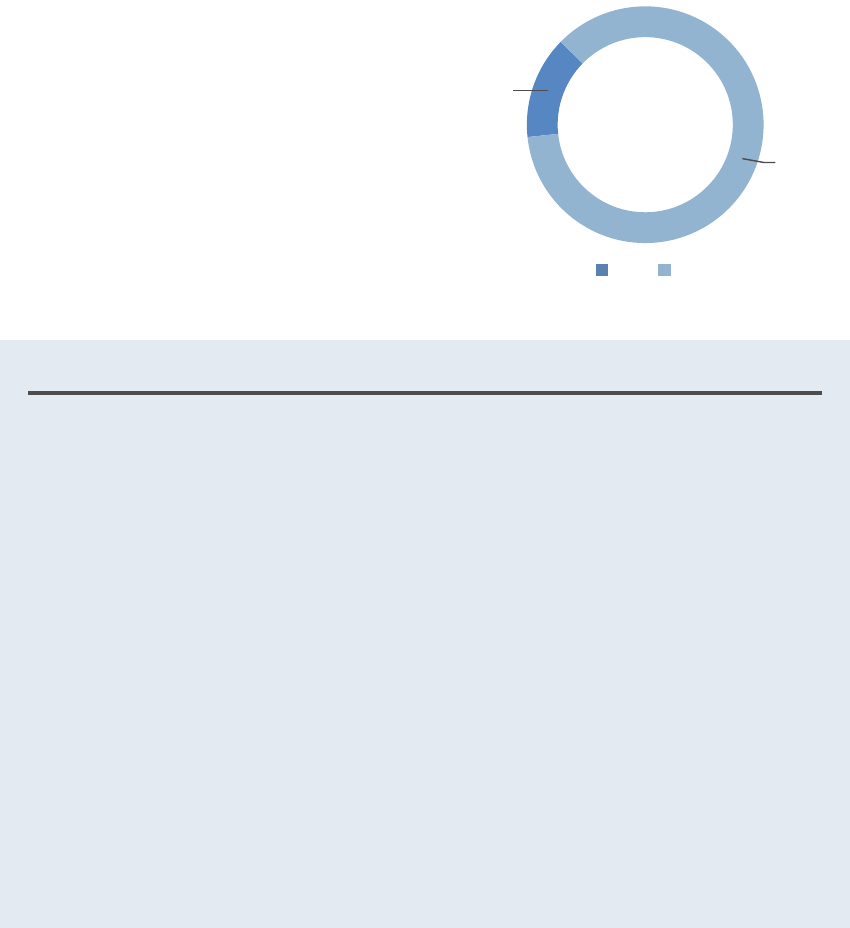
4.3. ISSUES WITH TENDERS FOR
ONLINE DISTRIBUTION
One of the main trends highlighted by the respondents in
the IQ is the internationalisation of the travel insurance
market. This phenomenon is often strengthened by the
growing importance of international tenders. In EIOPA’s
IQ participants were asked to report if they participated
in any tendering processes over the last three years, i.e.,
where distributors set upfront their commission rates
when putting up their distribution business for tender
among various insurance undertakings.
Almost all respondents provided answers to this question
- 190 out of 201. Only 14% of the insurance undertakings
reported to have participated in tenders and gave more
details about the participating conditions.
Participants highlighted that very often, the distributors
organising such tenders have pre-defined non-negotia-
ble commissions. The pre-set commissions are part of
the tender documentation and are very high, reaching
50%-60% of the premium and more. One respondent
mentioned that in international tenders the competition
is primarily based on commissions, the distributors select-
ing the insurance provider that oers the highest commis-
sion. (see Section 2.3 and 2.4 on business models)
The participants that responded not having participated in
tendering processes have also highlighted the issue around
very high commissions in such tenders. Some insurance
undertakings are deliberately not participating in tenders
because of the pre-set high levels of commissions. Moreo-
ver, some distributors would also set in the tendering terms
fees for exclusivity, profit share, marketing and IT costs.
BOX ANSWERS OF INSURANCE UNDERTAKINGS IN THE INDUSTRY QUESTIONNAIRE
“A distributing partner for [xxx] contacted us for
participating in a tender in 2017. Although the busi-
ness opportunity was very interesting oering the
possibility to expand our client base, the commission
level was very high – more than 60% of the premium.
Therefore, we decided to skip this oer, participating
in the tender would have eaten up all our profits.”
“Online travel agencies (OTAs) determine “minimum”
provisions in advance that have to be accepted in order
to participate in the tender. In addition, commissions
are usually pre-set and very high, together with other
fees like commercial support, technological compen-
sations, profit share, etc. Depending on the provisions
accepted by the IU, a conversation with the OTA might
engage in a conversation. The first assessment is based
on the provisions an IU is ready to accept and not on
the quality of its travel insurance products.”
“We participated in an international tender organised
by a travel agency. The winner obtained a five-year
exclusive contract worldwide. The pre-specified
commission ratio was around 60% complemented by
conditions on profit share as well as low limits of claim
ratio recognised by the travel agency. After making
our calculations considering the annual gross written
premium, commissions paid, claims and expenses the
profit would have been zero, only covering the total
costs”
“We considered participating in a tender organised
by an OTA specialised in the marketing of cruises.
The pre-set commission was more than 60% of the
premium; therefore we chose not to participate in the
tender”
Source: EIOPA Travel Insurance thematic review
Figure 36 - Participation of insurers in tenders
14%
86%
Yes No
Source: EIOPA Travel Insurance thematic review
Such practices can have a negative impact on competi-
tion and impose barriers to entry. Pre-set high commis-
sions can thereby discourage the development of diverse
online distribution models.
EUROPEAN INSURANCE AND OCCUPATIONAL PENSIONS AUTHORITY
46
Consumers could also benefit if correctly informed of
the procedures to file a claim, in particular of any specific
documentation that must be obtained prior to leaving the
destination (e.g. hospital or police report). Otherwise, it
could aect the customers’ ability to submit a claim and
the right to compensation.
High commission rates can be a significant source of
consumer detriment as they can provide an incentive for
aggressive selling practices and misleading consumers
to buy products paying higher commissions, rather than
products that would better suit customer needs. As seen
earlier, in some cases insurers pay commissions of more
than 50% of the GWP. (see Section 1.4 on commissions).
4.4. SALES PRACTICES
The thematic review sought to gain insight on distribution
and sales practices in the main by means of the analysis
of commissions, claims ratios and complaints by dierent
distribution channel, complimented by qualitative input.
The quantitative aspects have been set out already in this
report in Sections 1.4, 1.5 and 5. The qualitative input was
more limited, though as set out above respondents pro-
vided useful views on changes in distribution and busi-
ness models that appear to be happening. This section
contains a few remaining remarks.
The main reason reported for denied travel insurance
claims is exclusions in cover. This raises the question
whether or not consumers are misled during the sales
process or if they receive inadequate information (see
Section 1.6 on denied claims).
More generally, in a market characterised by complex
products and low consumer interest, correct and su-
cient information provision during the sale is crucial for
consumers to get the correct type of insurance and level
of cover. Misleading and inadequate information and
advice could lead to lack of cover (and denied claims) but
also to double-insurance or over-insurance.
CONSUMER PROTECTION ISSUES IN TRAVEL INSURANCE: A THEMATIC REVIEW
47
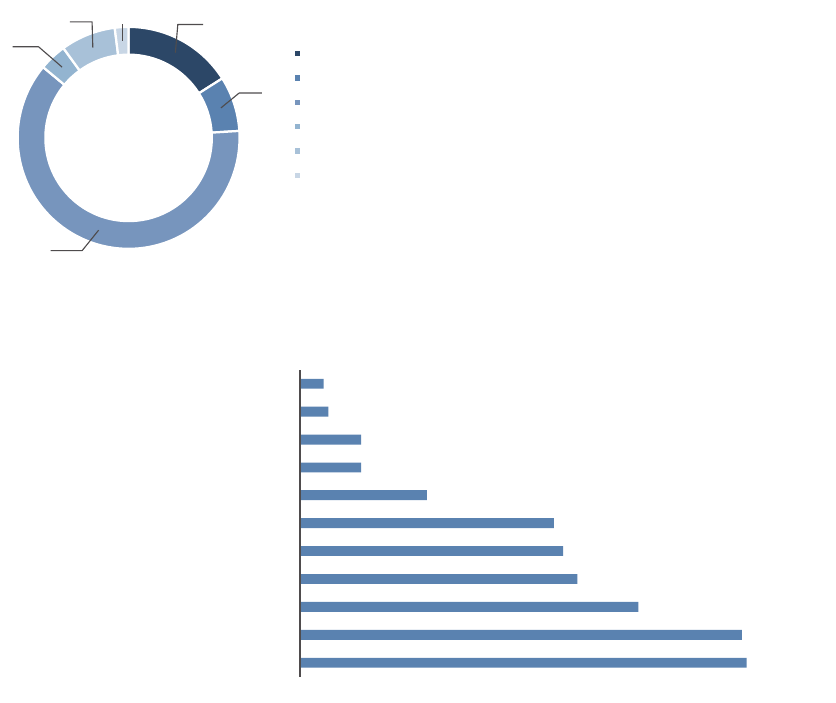
5. COMPLAINTS
Participants in the IQ were asked to report on complaints
received from consumers. The term “complaint” refers to
formal written expression (including in an electronic form)
of dissatisfaction submitted to supervisors regarding the
provision or a failure to provide a service or a product of
the insurance undertaking.
As shown in Figure 37, most of the complaints received
from consumers are related to claims handling (62% out
of total number of claims). It indicated that most of the
time, consumers are not happy with the outcome of their
claims.
In the IQ insurance undertakings have been asked if
they have formal processes to analyse, on an on-going
basis, the complaints data. Around 90% of respondents
reported that they do have such processes in place.
Insurance undertakings have also been asked what they
are doing in a case where recurring or systemic prob-
lems have been identified through complaint analysis
and which specific measures have been taken in the past
by the insurance undertakings to address the identified
problems. Most of the participants review the claims
handling procedure (68%) and modify the product (67%).
Around half of the respondents (42%) indicated that they
pay compensations to consumers following a complaint.
Figure 37 - Number of complaints per reason
16%
8%
62%
4%
8%
2%
Administration and customer service
Advising, selling and arranging
Claims
Commission, charges and premiums
Terms and conditions
Other
Source: EIOPA Travel Insurance thematic review
Source: EIOPA Travel Insurance thematic review
Figure 38 - Measure taken as a follow-up to complaints
68%
67%
51%
42%
40%
39%
19%
9%
9%
4%
4%
0% 10% 20% 30% 40% 50% 60% 70% 80%
Review Claims handling procedure
Modify Product
Review other administrative procedures
Pay redress or compansation
Review Sales Practice
Review complaints-handling procedures
Review distribution channels / arrangements
Other
Terminated relationship with distributor
Withdraw product(s)
Withdraw from specific distribution channel
EUROPEAN INSURANCE AND OCCUPATIONAL PENSIONS AUTHORITY
48
6. CONCLUSIONS AND NEXT STEPS
The thematic review has revealed some positive devel-
opments in travel insurance. Digitalisation and new
technologies allow insurers to provide travel insurance
products adapted to the changing consumer preferences.
Consumers can engage with insurers, subscribe to poli-
cies and receive assistance at any time of the day. EIOPA
acknowledges and welcomes the benefits that innovation
can bring both for consumers and insurers.
In addition, the review indicates that the travel insurance
market as a whole does not carry significant market fail-
ures.
However, the thematic review has brought under the spot-
light a number of issues related to certain business mod-
els that warrant follow up work. The IDD, which recently
entered into force, sets out a framework for addressing
many issues in this report. EIOPA considers also that spe-
cific attention should be considered to address identified
risks, including those arising from certain business models
and accompanying high commissions, in order to ensure
that fair outcomes for consumers are achieved in practice.
Given a growing travel insurance market, aiding that mar-
ket in developing products that better meet consumer
needs is essential.
The main conclusions from the thematic review are as
follows:
¡ Digitalisation is starting to transform the entire
experience of consumers, allowing them to
complete their end-to-end journey online.
¡ Product oers are evolving, travel insurance pol-
icies becoming more flexible and adjustable to
individual cases. Some insurers are innovating,
trying to cover the new emerging needs of con-
sumers by designing new products.
¡ Although the average commissions in travel
insurance are around 24% of the GWP, there are
insurers that pay extremely high commissions to
distributors.
¡ New digital distribution models generate sig-
nificant business opportunities for insurers,
increasing sales and reaching larger numbers
of customers. However, some new distributors
that are entering the market seem, according to
respondents, to be driving commissions up and
product quality down. Some insurance under-
takings reported to EIOPA that in some cases
high commissions put a significant pressure on
profit margins and the quality of the products
oered to consumers. This can lead to consum-
ers paying high premiums for poor value prod-
ucts - a problem also evident in more traditional
distribution models.
¡ There are also issues around product design of
travel policies. Pre-existing medical conditions
are most of the time excluded from the travel
insurance product. Most insurers do not use
medical screening before signing a contract
and pre-existent medical conditions are not
declared. Consumers might not be suciently
aware of the impact that pre-existing medical
conditions have on the outcome of a claim.
¡ In general, the average claims ratio in travel
insurance is around 40% of the GWP, however
individual claims ratios are divergent from the
average, in some cases inferior these are very
low, accounting for less than 20% of the GWP.
Taken together with the above-mentioned
issues, the value for money of some travel insur-
ance products is too low.
To summarise, the main issues identified in the Review
are related to high commissions, the add-on nature of the
travel insurance jointly with the exploitation of behav-
ioural biases, and the consequent tendency for low value
products.
¡ The high levels of commissions have a direct
impact on consumers and some of the new dis-
tribution models that exploit such remuneration
structures may not be beneficial to consumers
nor to underwriters.
¡ Some insurers pay very high commission rates
to distributors and have very low claims ratios.
¡ Such business models can negatively aect the
value and the quality of products, leading to
consumer detriment.
CONSUMER PROTECTION ISSUES IN TRAVEL INSURANCE: A THEMATIC REVIEW
49
¡ Customers may be purchasing and insurers
are oering travel insurance products that are
not suciently adapted to their needs, due to
exclusions in cover (i.e., pre-existing medical
conditions), limitations in coverage or even
overlapping coverage.
These issues are interlinked and can be address jointly
for a better outcome. A holistic supervisory approach to
these problem is recommended as to eliminate the risk of
obtaining short-term results and a worsening of the situa-
tion in the market in the long run.
The existence of cases with very high commission pay-
ments appears to be a central issue. In this regard, EIOPA
believes that disclosure on commission levels to consum-
ers may not have sucient impact on its own, however in
the long term it could improve remuneration structures
and could incentivise shopping around for consumers. In
some EU Member States, the national supervisors have
taken measures to address high levels of commissions
through caps. The option of setting industry-wide caps on
commissions by national supervisors may need to be con-
sidered, reflecting of course national market specificities.
Given the findings of the thematic review, EIOPA intends
to put together a package of actions reflecting all availa-
ble supervisory tools.
It will assess a warning to the industry on high commis-
sions and the business models that use them. A renewed
focus on the quality and value of products would also be
needed. Specific action may also be necessary to address
the exclusion of pre-existing medical conditions from the
coverage oered by some travel insurance products, in
order to ensure that the needs of consumers are met.
Considering the new regulatory framework, EIOPA will
also assess setting out its expectations on the implemen-
tation of IDD in this context - as a reinforcement of the
importance of rules on acting in the best interests of the
customer, on conflicts of interest and on product over-
sight and governance. In addition, EIOPA will continue
following the implementation of the IDD in the Member
States and prepare for the IDD review exercise in 2021.
Finally, EIOPA will also begin a dialogue with the industry
including new market players (e.g. involved in distribu-
tion), NCAs and consumer representatives on how to best
tackle consumer behaviour in the context of such markets
from a practical standpoint.
EUROPEAN INSURANCE AND OCCUPATIONAL PENSIONS AUTHORITY
50
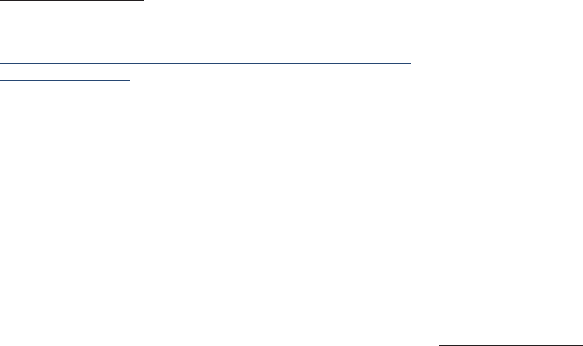
ANNEX I – REGULATORY FRAMEWORK
The Insurance Distribution Directive (IDD) (
42
) extends
the scope of regulated entities captured beyond its pre-
decessor, the Insurance Mediation Directive (IMD), by
covering direct writers and entities that distribute insur-
ance products on an ancillary basis. The aim is to pro-
mote a level playing field and competition on equal terms
between dierent distribution channels and a consistent
level of consumer protection. (
43
)
The article 24 (1)(3) of the IDD (
44
) covers the insurance
products oered together with an ancillary product or
service which is not insurance. In the case where both are
part of a package or the same agreement, the insurance
distributor shall oer the customer the possibility of buy-
ing the good or the service separately.
Under the IDD, the term ‘ancillary insurance intermediary’
refers to natural or legal persons whose main business is
not insurance-related who, for remuneration on an ancil-
lary basis, take up or pursue insurance or reinsurance dis-
tribution as a secondary activity.
To qualify as an ancillary insurance intermediary, the
person or entity must satisfy all the conditions set out
in Article 2(1)(4) of the IDD. (
45
) In particular, banks and
investment firms cannot be ancillary insurance interme-
diaries.
Certain ancillary insurance intermediaries may, however,
be exempted from the scope of the IDD under certain
(
42
) Directive (EU) 2016/97 of the European Parliament and of the
Council of 20 January 2016 on insurance distribution; available at:
http://eur-lex.europa.eu/legal-content/EN/TXT/PDF/?uri=CELEX-
:32016L0097&from=en.
(
43
) Recital 16 of the IDD.
(
44
) Recital 24 of the IDD
(
45
) “Ancillary insurance intermediary” means any natural or legal per-
son, other than a credit institution or an investment firm as defined in
points (1) and (2) of Article 4(1) of Regulation (EU) No 575/2013 of the
European Parliament and of the Council (1), who, for remuneration, takes
up or pursues the activity of insurance distribution on an ancillary basis,
provided that all the following conditions are met:
(
a
) the principal professional activity of that natural or legal person is
other than insurance distribution;
(
b
) the natural or legal person only distributes certain insurance products
that are complementary to a good or service;
(
c
) the insurance products concerned do not cover life assurance or lia-
bility risks, unless that cover complements the good or service which the
intermediary provides as its principal professional activity.
conditions. The exemption under Article 1(3), IDD applies
when:
(a) The insurance is complementary to the good or ser-
vice supplied by a provider and where that insurance
covers:
(i) the risk of breakdown, loss of, or damage to, the
good or the non-use of the service supplied by
that provider; or
(ii) damage to, or loss of, baggage and other risks
linked to travel booked with that provider.
(b) The amount of the premium paid for the insurance
product must not exceed €600 calculated on a pro
rata annual basis.
(c) By way of derogation from the above limit, the
exemption may also apply when the amount of the
premium paid per person does not exceed €200
where the duration of that service is equal to, or less
than, three months.
The above exemption is key to the distribution of travel
insurance as in many instances it is distributed through
ancillary insurance intermediaries. The IDD is minimum
harmonisation so which means that Member States can
introduce more stringent rules to bring within scope
ancillary insurance intermediaries (which would normally
be exempted). Regardless of whether ancillary intermedi-
aries are within or out of scope based on the exemptions
explained above:
› IDD (
46
) requires insurance undertakings and/or
insurance intermediaries using an ancillary insurance
intermediary to provide information prior to the
conclusion of the contract, including the Insurance
Product Information Document (IPID), the identity
and address of the insurance undertaking and the
procedure to lodge complaints.
› Insurance undertakings must have in place appropri-
ate and proportionate arrangements to comply with
certain conduct of business rules when distributing
travel insurance through ancillary insurance interme-
diaries who are exempted from the application of the
IDD. These include:
(
46
) Article 1(4).
CONSUMER PROTECTION ISSUES IN TRAVEL INSURANCE: A THEMATIC REVIEW
51
¡ The demand and needs test;
¡ A general duty to act honestly, fairly and profes-
sionally in accordance with the best interests of
their customers (Article 17(1) of the IDD);
¡ A general obligation to provide fair, clear and
not misleading information (Article 17(2) of the
IDD). Insurance undertakings are also required
to comply with the IDD provisions applicable to
cross-selling (Article 24 of the IDD) when the
insurance policy is sold together with an ancil-
lary service or product or where the insurance
product is ancillary to a good or service which
is not insurance. This last situation is particularly
relevant as to how travel insurance is distrib-
uted.
¡ According to the Article 17(3) of the IDD, Mem-
ber States shall ensure that insurance distribu-
tors, including ancillary insurance intermediaries
in scope (Article 2.1 (8) of the IDD), are not
remunerated or do not remunerate or assess
the performance of their employees in a way
that conflicts with their duty to act in accord-
ance with the best interests of their customers.
In particular, an insurance distributor shall not
make any arrangement by way of remuneration,
sales targets or otherwise that could provide
an incentive to itself or its employees to rec-
ommend a particular insurance product to a
customer when the insurance distributor could
oer a dierent insurance product which would
better meet the customer’s needs.
¡ Finally, Product Oversight and Governance
(POG) requirements (Article 25 of the IDD)
apply to insurance undertakings, insurance
intermediaries including insurance ancillary
intermediairies and all products except those
which consist of the insurance of large risks.
EUROPEAN INSURANCE AND OCCUPATIONAL PENSIONS AUTHORITY
52

ANNEX II – REPORTED CONSUMER
PROTECTION ISSUES
Over the last five years via EIOPA’s Consumer Trends
work, National Competent Authorities (NCAs) have
reported several consumer protection issues relating
to travel insurance. Further issues have, likewise, been
highlighted by analysing retail risk indicators (
47
) (RRIs) at
EU-wide and Member State level. Several of the identi-
fied issues and additional ones have also been reported
to EIOPA by stakeholders.
Complaints oer a natural starting point. Pre-existing evi-
dence has been that complaints are typically related to
claims handling. (
48
) These include delays in and complex-
ity of the claims handling process (e.g. extensive forms
and supporting documentation), insucient compensa-
tion and denied claims. It should however be noted that
travel insurance presents relatively low levels of com-
plaints, both in absolute terms as well as in relation to the
number of contracts (e.g. 0.28 complaints per 1000 con-
tracts compared to 1.04 complaints per 1000 contracts
for motor insurance in 2015 (
49
)).
The main reason put forward in existing evidence as to
why claims are denied is exclusions in cover, in particu-
lar linked to pre-existing medical conditions. This raises
questions as to whether consumer detriment arises from
how travel insurance products are designed (
50
) or from
consumers being provided with misleading or inadequate
information about the product.
Considering the above, reported claims ratios for travel
insurance are among the lowest when compared to other
lines of business. (
51
) While low claims ratios are positive
(
47
) Retail Risk Indicators Methodology Report; available at: https://eiopa.
europa.eu/Publications/Reports/EIOPA-BoS-15-260%20-%20Retail_Risks_
Indicators_Methodology_Report_update-15-02-2016.pdf#search=retail%20
risk%20indicator.
(
48
) In 2016, claims-related issues were the main cause of complaints in
insurance across the dierent product categories; source: EIOPA Sixth
Consumer Trends Report; available at: https://eiopa.europa.eu/Publica-
tions/Reports/Sixth%20Consumer%20Trends%20report.pdf.
(
49
) Source: Retail Risk Indicators - Phase II (EIOPA-BoS/17-220).
(
50
) It seems that a significant number of complaints relate to the terms
and conditions of policies.
(
51
) In 2015 the lowest claims ratio were for household insurance (50.8%),
followed by travel insurance (51.3%); source: Retail Risk Indicators - Phase
II (EIOPA-BoS/17-220).
for insurance undertakings in terms of the solvency posi-
tion, from a conduct perspective there may be more
concern. Low claims ratios can be a sign of miss-selling
products, of bad wording of the product terms or of high
claim refusal rates. It could, furthermore, be a sign that
consumers are not fully aware of the cover they have or
that they have travel insurance at all. (
52
) It may also be
possible that (some) consumers simply opt to not for-
mally file a claim due to predetermined beliefs that the
claim will not be accepted. Notwithstanding the above, it
must be noted that there could be non-conduct-related
reasons why claims ratios are low, for instance as a result
of low casualty rates or a low number of accidents. Nev-
ertheless, the persistence of low levels of claims ratios
over time should be examined.
In addition, the travel insurance market appears to be
characterised by relatively high commission rates – as
reported to EIOPA through retail risk indicators. (
53
) Such
high commission rates could provide an incentive for mis-
leading or aggressive selling practices, while reducing the
overall value of the policies on oer.
Stakeholders have also brought to EIOPA’s attention some
recent trends in the distribution of travel insurance, which
may contribute to consumer detriment. The increase in
sales through digital and remote channels complement-
ing more traditional distribution channels (e.g. travel
agents) may bring benefits to consumers, but could also
create specific consumer detriment or increase the scale
of diculties that already exist in oine distribution.
This trend may be further boosted as online travel special-
ists (
54
) play an increasingly role as distributors of travel
insurance and where large technological/internet com-
panies (
55
) decide to enter the travel insurance market, at
least as a first step, in distribution. Of potential significance
(
52
) This could be particularly the case where travel insurance is auto-
matically included as add-on insurance to other primary financial prod-
ucts such as credit cards or bank accounts.
(
53
) In 2015 travel insurance products displayed the highest commissions
(28%); source: Retail Risk Indicators - Phase II (EIOPA-BoS/17-220).
(
54
) E.g. Bookings.com, TripAdvisor, Expedia or Trivago.
(
55
) E.g. GAFAs (Google, Amazon, Facebook and Apple).
CONSUMER PROTECTION ISSUES IN TRAVEL INSURANCE: A THEMATIC REVIEW
53
for consumers is the business model used by new large
entrants in travel insurance distribution. Rather than oper-
ating as conventional insurance intermediaries, they may
operate as business originators and leverage their large
customer base and market power when setting the terms
of the distribution agreement with insurance undertakings.
Insurance undertakings have highlighted to EIOPA that
some of these new entrants set upfront their (unnegotia-
ble) commission rates when putting up their distribution
business for tender among various insurance undertakings.
Some accounts point to commission of up to 80 percent.
Finally, considering travel insurance’s prices vary signifi-
cantly, depending on the destination, duration and pur-
pose of the specific trip as well as whether its ongoing
or on-demand coverage, comparison between dierent
products and shopping around could be beneficial for
consumers. However, consumers do not tend to search
the market and compare dierent products. This could be
due to the way in which products are commercialized but
also by an inherent diculty in comparing products due
to product variation and complexity.
EUROPEAN INSURANCE AND OCCUPATIONAL PENSIONS AUTHORITY
54
ANNEX III – GLOSSARY
Ancillary insurance
intermediary
Natural or legal person whose main business is not insurance-related who, for
remuneration on an ancillary basis, takes up or pursues insurance distribution as a
secondary activity; satisfy all the conditions set out in Article 2(1)(4) of the IDD.
Bancassurance Distribution carried out by a banking and credit institution (e.g. retail and commercial
bank, internet bank, mortgage and credit provider, credit card provider, etc.) resulting
from partnership or relationship between the insurance undertaking and the banking
or credit institution where the later acts as agent and the insurance undertaking uses
the banking or credit institutions’ sales channels such as bank branches or websites.
Big Data Analytics (BDA) Large volumes of data that can be generated, processed and increasingly used by digital
tools and information systems for making predictive, descriptive and prescriptive
analysis. This capability is driven by the increased availability of structured data, the
ability to process unstructured data, increased data storage capabilities and advances
in computing power.
Chatbot A computer program that simulates human conversation through voice commands
or text chats or both. Chatbots are typically embedded into messaging applications.
Claims denied Claims submitted by the policyholder and dully processed by the insurance
undertaking which have ended without payment to the policyholder. For the purpose
of the thematic review, only claims completely denied should be considered as claims
denied. Claims partially denied should not be considered as claims denied.
Claims ratio Claims paid (excludes claims reserves and Incurred But Not Reported - IBNR) as a
percentage of gross written premium charged during a specified period.
Commission ratio Commissions paid to insurance distributors as a percentage of gross written premium
charged during a specified period.
Comparison website and
aggregator
Online interface (website or other media) with the purpose of providing information
concerning one or more insurance contracts in accordance with criteria selected by
customers and the compilation of an insurance product ranking list, including price
and product comparison, or a discount on the price of an insurance contract, when
the customer is able to directly or indirectly conclude an insurance contract using the
online interface.
Complaint Formal written expression (including in electronic mode) of dissatisfaction submitted
to regulators regarding the provision of, or failure to provide a service or a product of
the insurance undertaking
Direct sales Sales by the insurance undertaking without the use of an insurance intermediary,
comprising sales through the insurance undertaking’s branches, employee sales
agents/sta or the insurance undertaking’s website.
Expense ratio Expenses (all expenses other than commissions) incurred as a percentage of gross
written premium charged during a specified period.
Gross written premium The total premium on insurance underwritten by the insurance undertaking during a
specified period, before deduction of reinsurance premium.
Insurance agent Insurance intermediary authorised to conduct business on behalf of the insurance
undertaking and who negotiates insurance contracts as an insurance undertaking’s
representative. Can operate exclusively for the insurance undertaking (“single-tied
agent”) or for more than one insurance undertaking (“multi-tied agent”).
CONSUMER PROTECTION ISSUES IN TRAVEL INSURANCE: A THEMATIC REVIEW
55
Insurance broker Insurance intermediary who negotiates insurance contracts on behalf of an insured
party (policyholder) with insurance undertakings. In contrast with an insurance
agent, the broker’s primary alliance is with the insurance buyer not the insurance
undertaking and usually works with multiple insurance undertakings to place coverage
for customers.
Insurance overlap Situation where the policyholder has two or more policies covering the same risk. E.g.
double insurance where two policies cover the same risk.
Modular product
architecture
Approach whereby the policyholder is able to tailor his policy by selecting from a
significant range of pre-set coverages, resulting in individualised insurance policies.
Multi-trip Insurance policy also known as annual plans, providing coverage for multiple trips
during a calendar year.
Net underwriting result Gross written premium less claims payments, commissions and expenses as a
percentage of gross written premium charged during a specified period; excludes
investment income earned on held premiums.
Online travel specialist Online-based company specializing in travel-related services and products to
consumers including hotel and restaurant reviews and other travel-related content,
accommodation and travel bookings and travel metasearch engines. E.g. Bookings.
com, TripAdvisor, Expedia or Trivago.
Online travel agency (OTA) Online-based company specialized in oering travel-related planning sources and
booking capabilities.
Over-insurance Situation where the level of cover a policyholder has is higher than needed. E.g.
coverage for more than the value of item that is insured.
Single trip Insurance policy providing coverage for a specific trip and is matched to the exact
characteristic of the trip (e.g. number of travelling days and destination).
Standard packaged product
approach
Approach whereby the insurance undertaking oers pre-designed products which
vary by coverage type, limit etc. In this approach, it is common for products to range
from those providing basic coverage to those providing comprehensive coverage.
Product are often named using terms suggestive of the level of coverage (e.g. bronze,
silver, gold).
Travel agent / tour operator Natural or legal person that engages in selling or providing travel and tourism related
services to the public on behalf of suppliers such as activities, airlines, car rentals,
cruise lines, hotels, railways, and package tours.
Under-insurance Situation where the level of cover a policyholder has is inadequate and lower than
needed. E.g. coverage for less than the value of item that is insured.
EUROPEAN INSURANCE AND OCCUPATIONAL PENSIONS AUTHORITY
56
ANNEX IV – LIST OF ACRONYMS
ASIC Australian Securities and Investments Commission
BDA Big Data Analytics
BEUC The European Consumer Organisation
CCPFI Committee on Consumer Protection and Financial Innovation
EEA European Economic Area
EHIC European Health Insurance Card
EIOPA European Insurance and Occupational Pensions Authority
FCA Financial Conduct Authority
GAFAs Google Amazon Facebook Apple
GPS Global Positioning System
GWP Gross written premium
IDD Insurance Distribution Directive
IPID Insurance product information document
IQ Industry Questionnaire
IRSG Insurance and Reinsurance Stakeholder Group
IVASS Italian Institute for the Supervision of Insurance
MTLP Motor Third Party Liability
NCA National Competence Authority
UNWTO United Nations World Tourism Organization
CONSUMER PROTECTION ISSUES IN TRAVEL INSURANCE: A THEMATIC REVIEW
57

Getting in touch with the EU
In person
All over the European Union there are hundreds of Europe Direct information centres.
You can find the address of the centre nearest you at: https://europa.eu/european-union/contact_en
On the phone or by email
Europe Direct is a service that answers your questions about the European Union.
You can contact this service:
– by freephone: 00 800 6 7 8 9 10 11 (certain operators may charge for these calls),
– at the following standard number: +32 22999696 or
– by email via: https://europa.eu/european-union/contact_en
Finding information about the EU
Online
Information about the European Union in all the ocial languages of the EU is available on the Europa
website at: https://europa.eu/european-union/index_en
EU publications
You can download or order free and priced EU publications at:
https://publications.europa.eu/en/publications. Multiple copies of free publications may be obtained
by contacting Europe Direct or your local information centre (see https://europa.eu/european-union/
contact_en).
EU law and related documents
For access to legal information from the EU, including all EU law since 1952 in all the ocial language
versions, go to EUR-Lex at: http://eur-lex.europa.eu
Open data from the EU
The EU Open Data Portal (http://data.europa.eu/euodp/en) provides access to datasets from the EU. Data
can be downloaded and reused for free, for both commercial and non-commercial purposes.
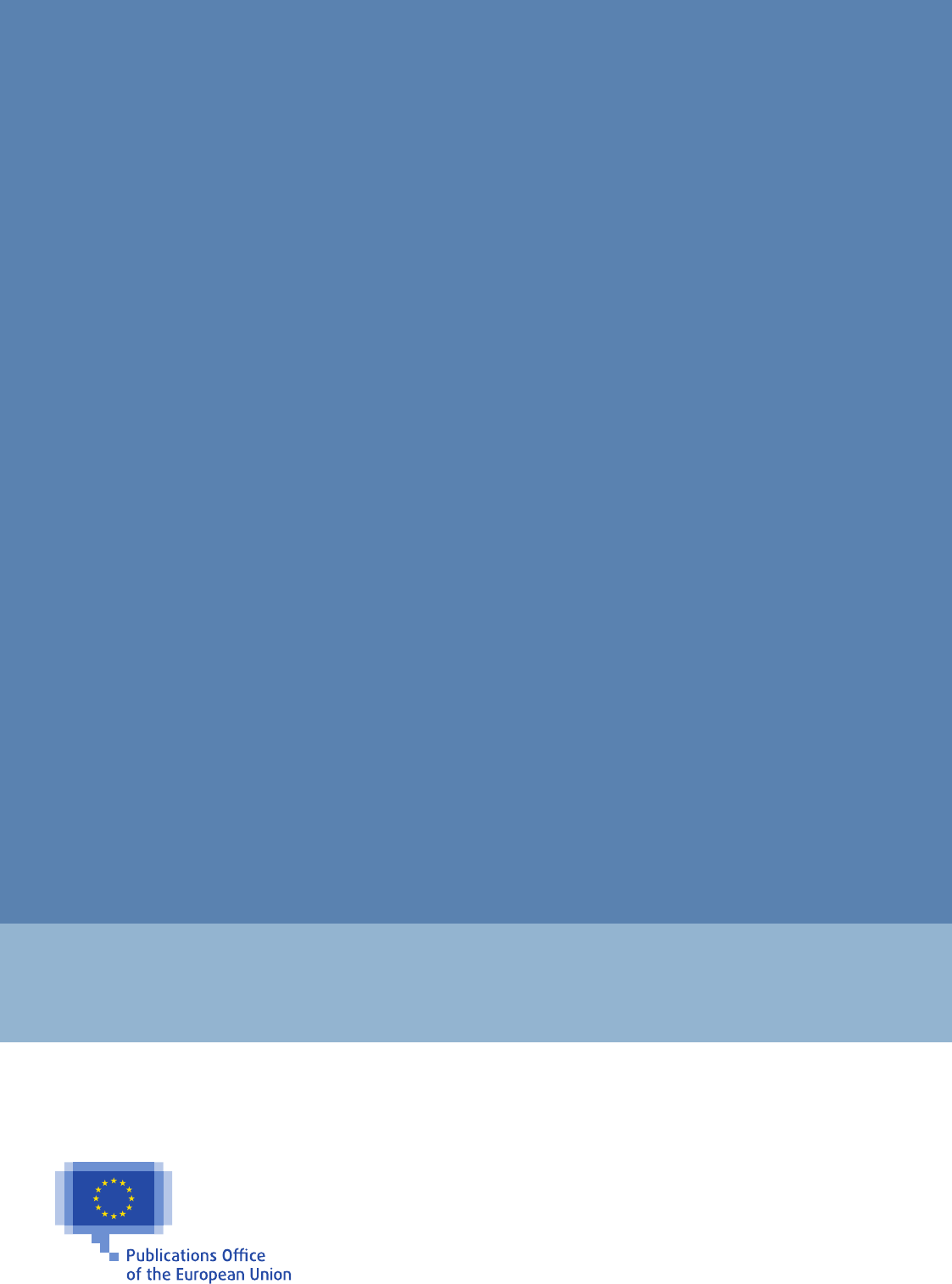
EUROPEAN INSURANCE AND
OCCUPATIONAL PENSIONS AUTHORITY
Westhafenplatz 1,
60327 Frankfurt am Main, German y
